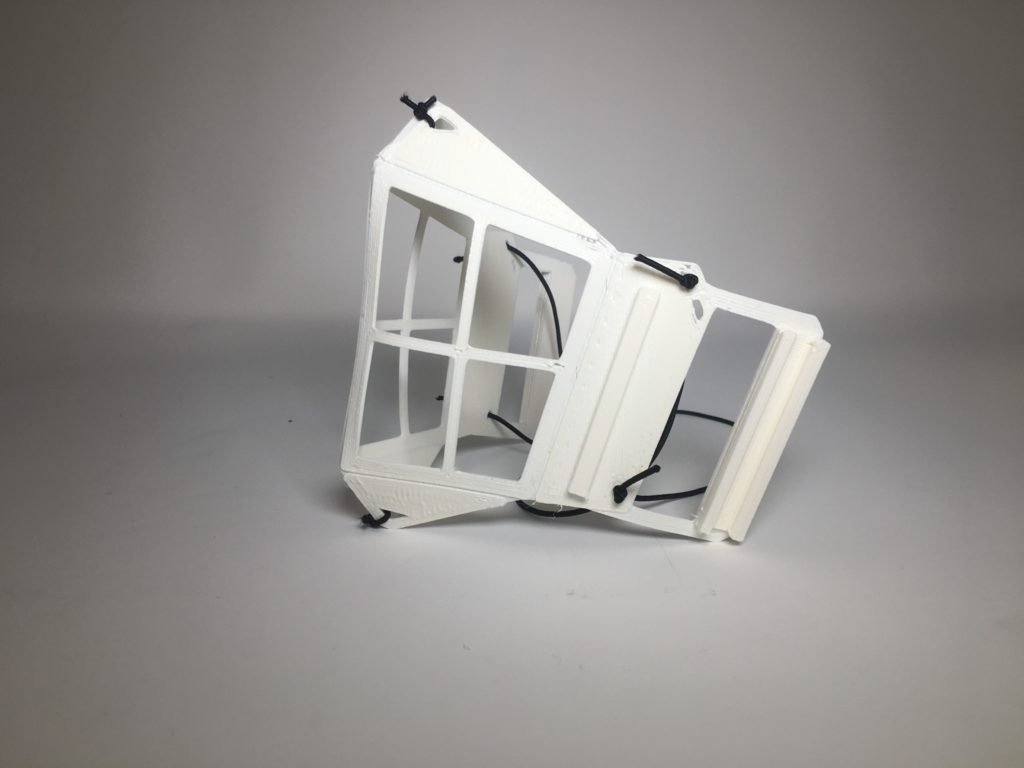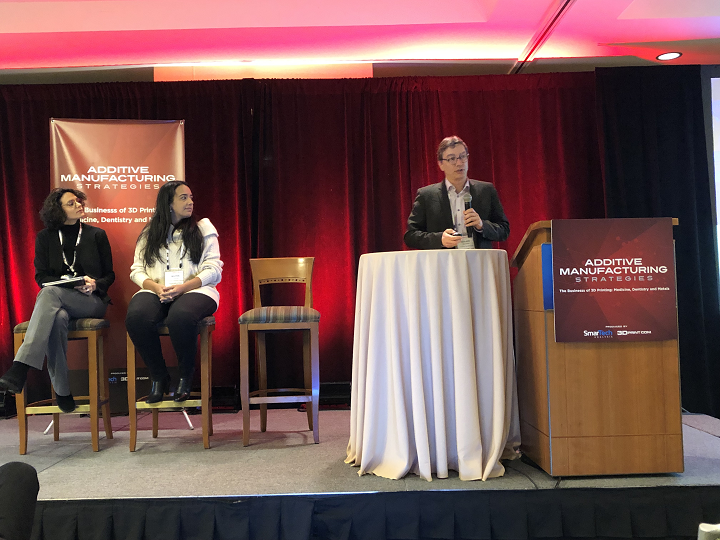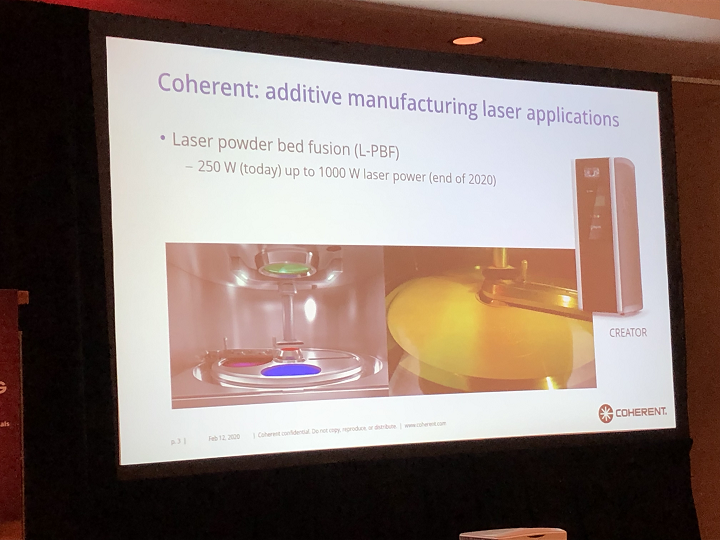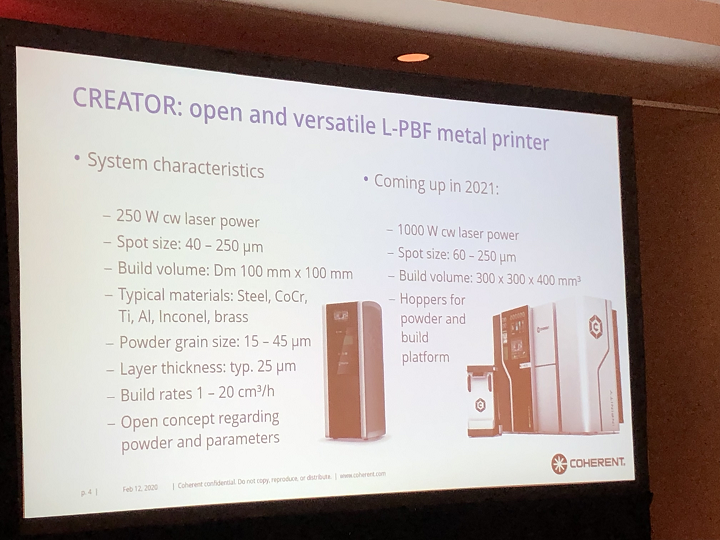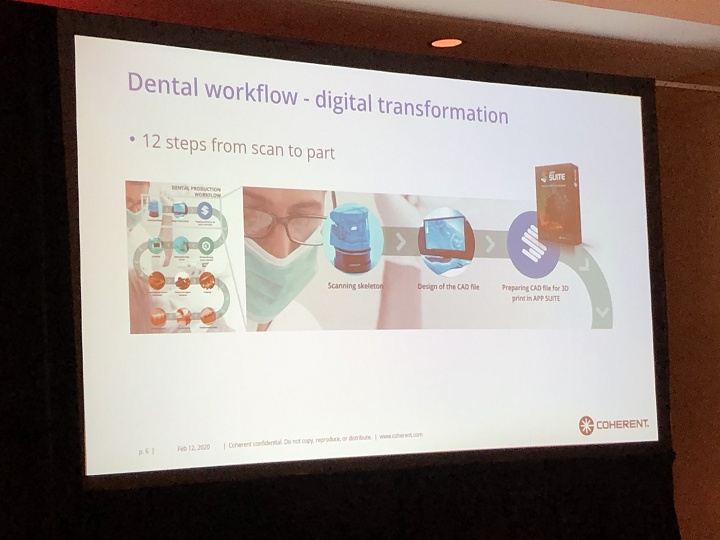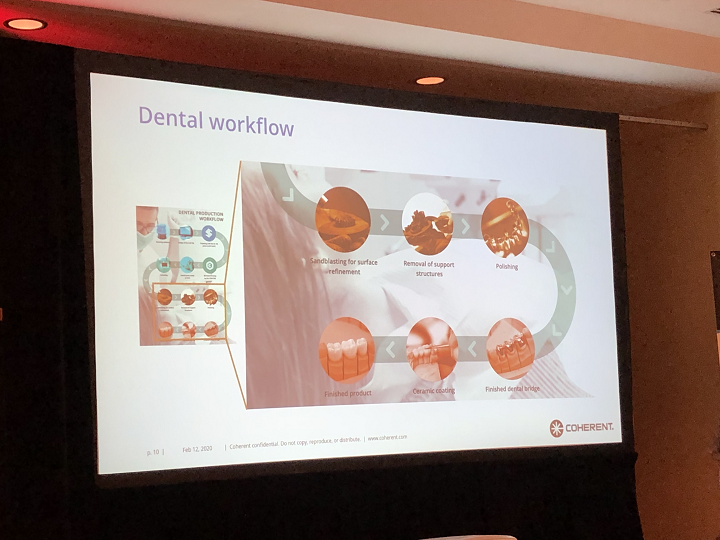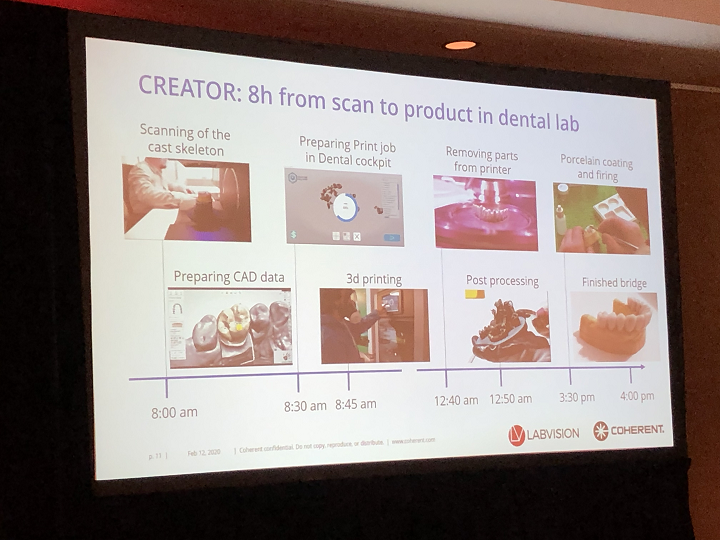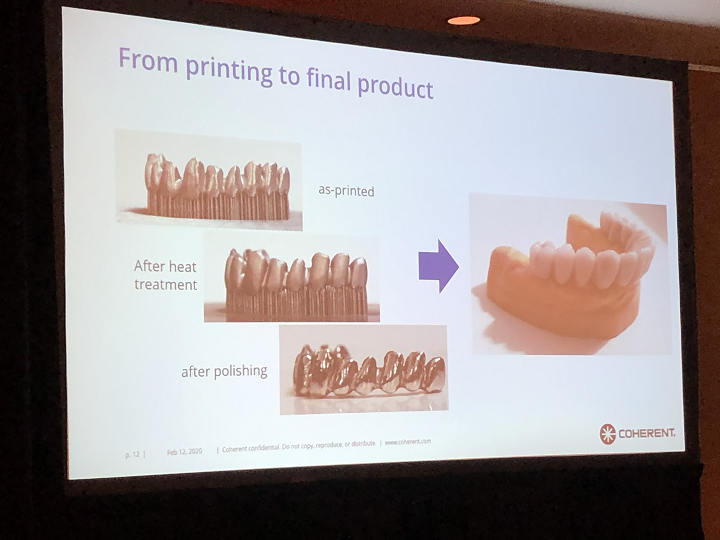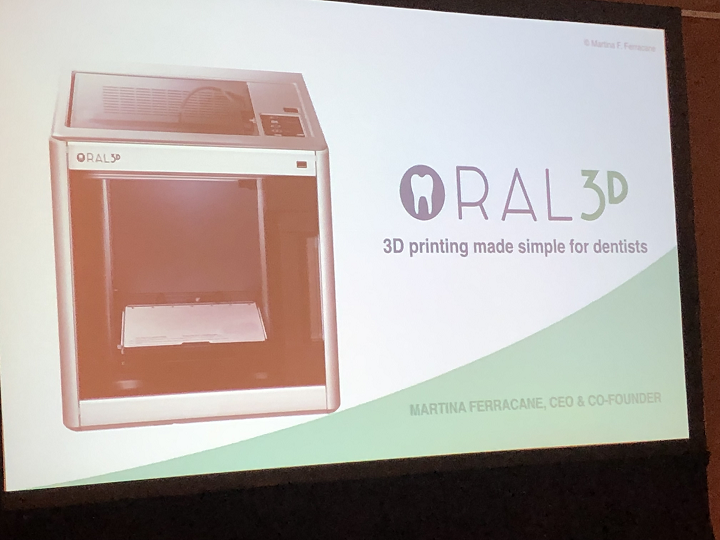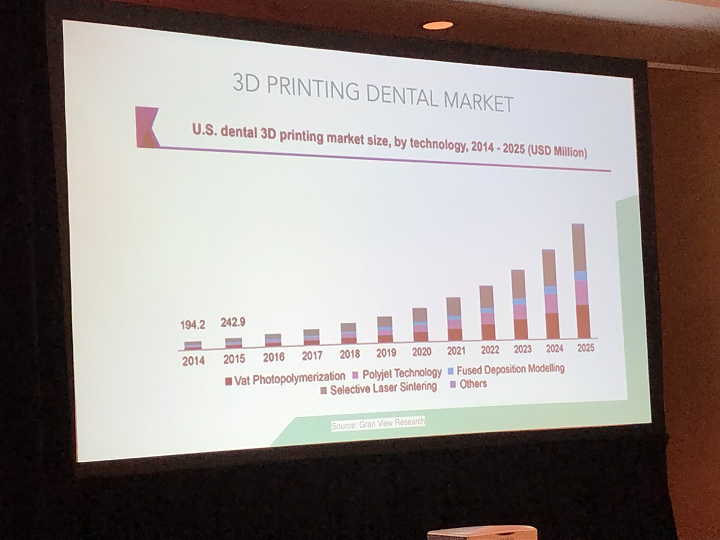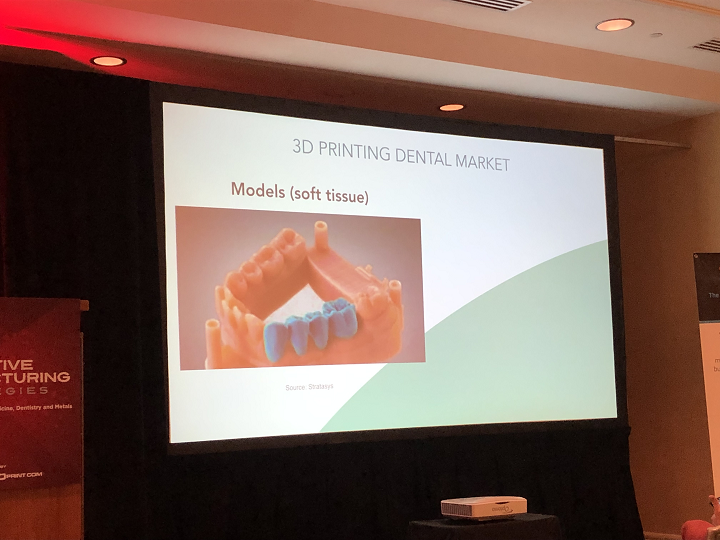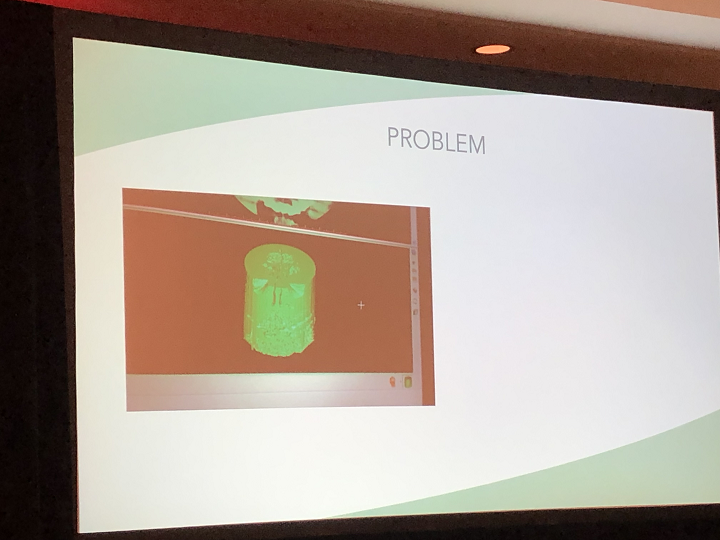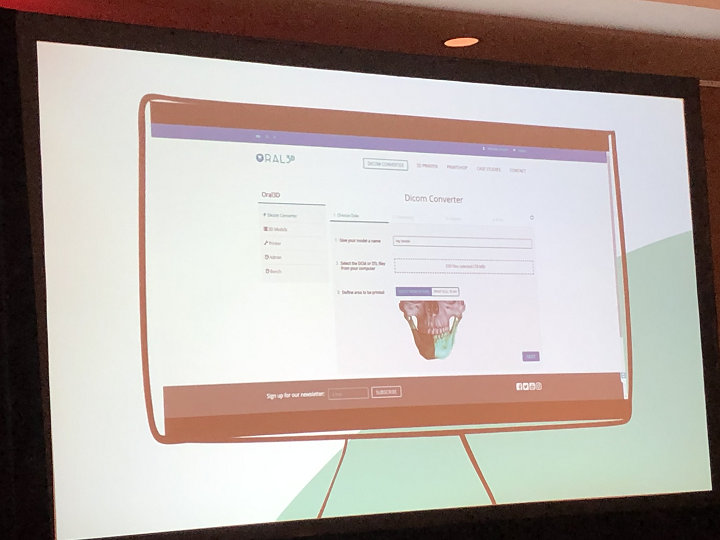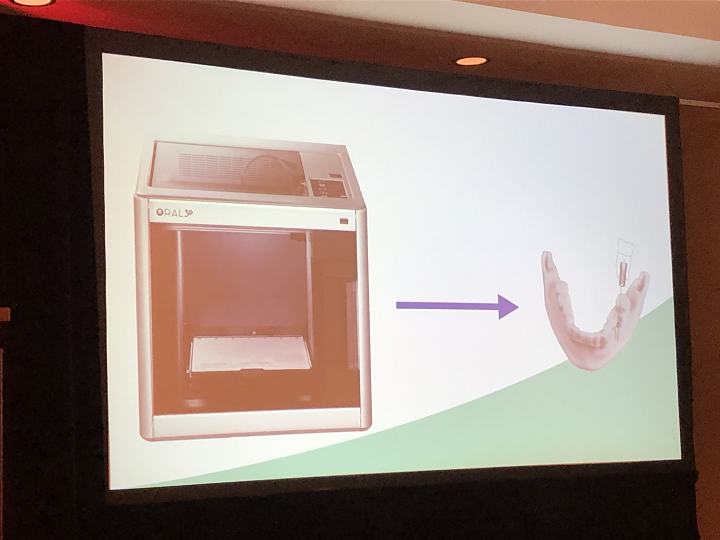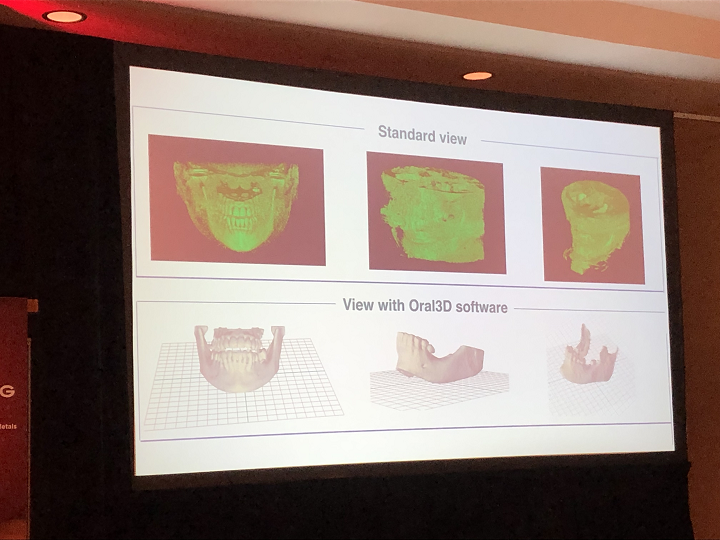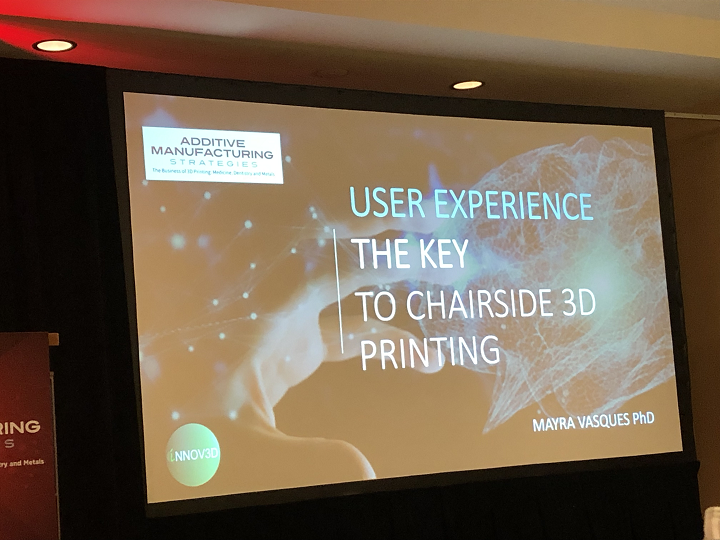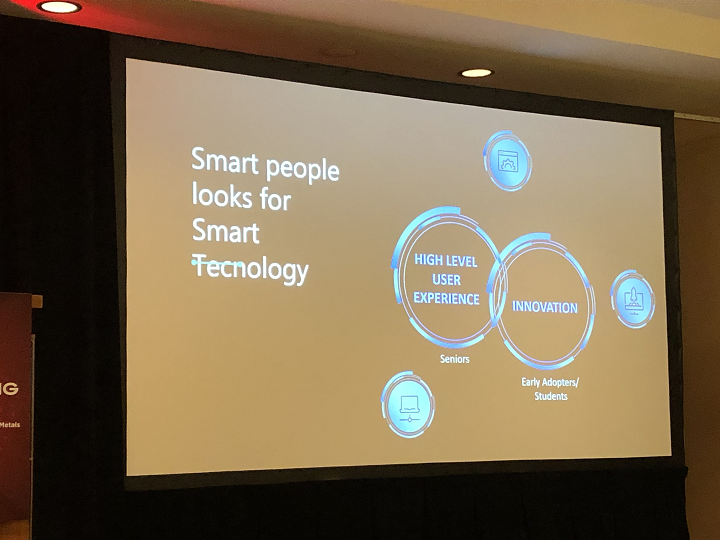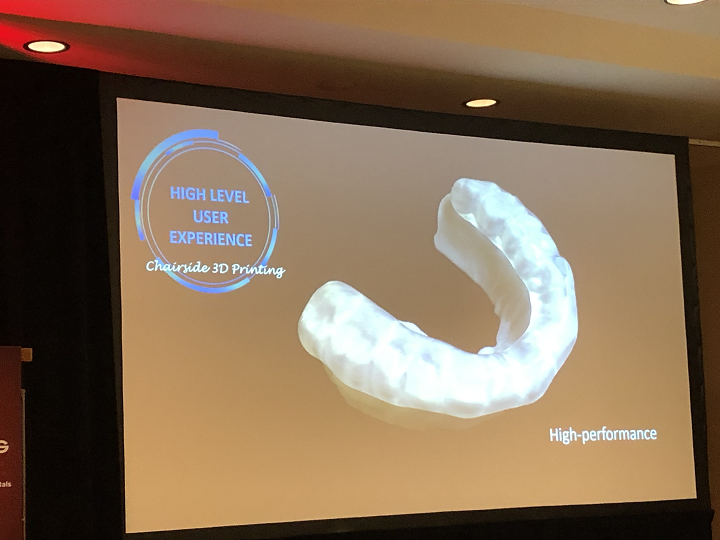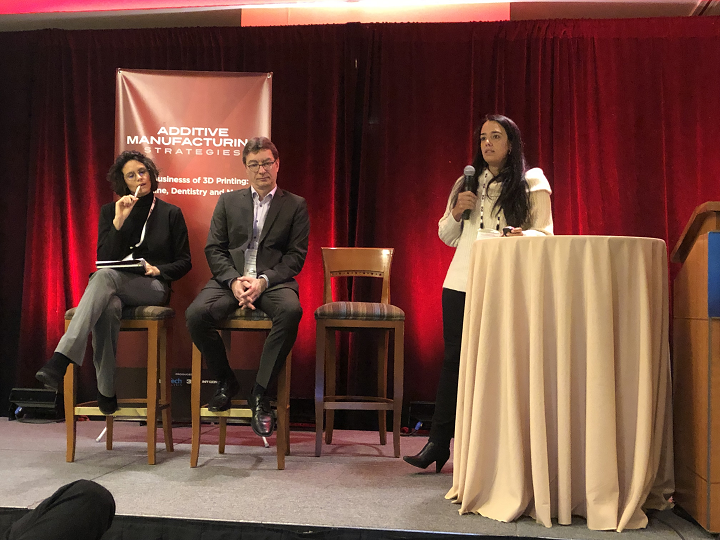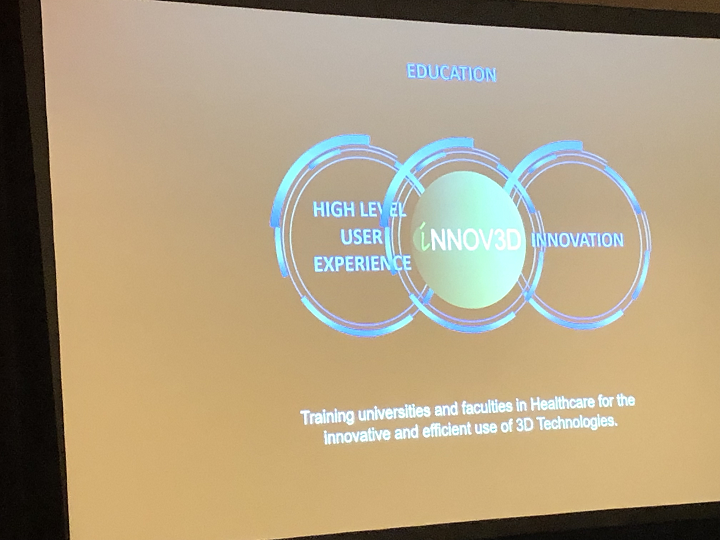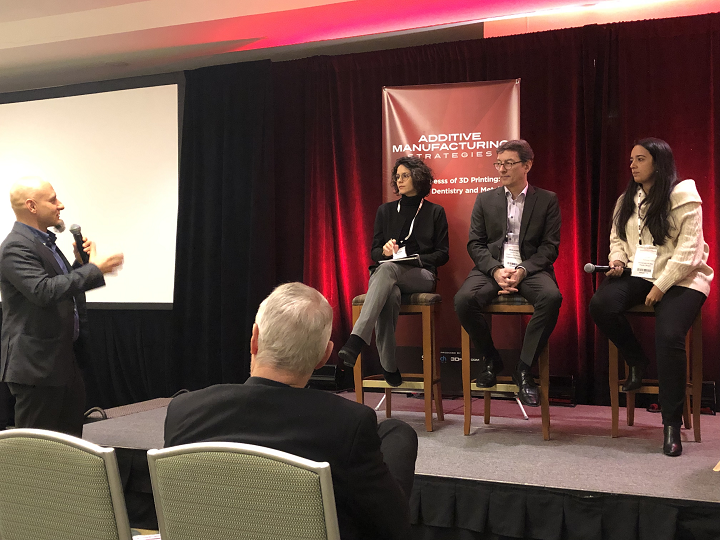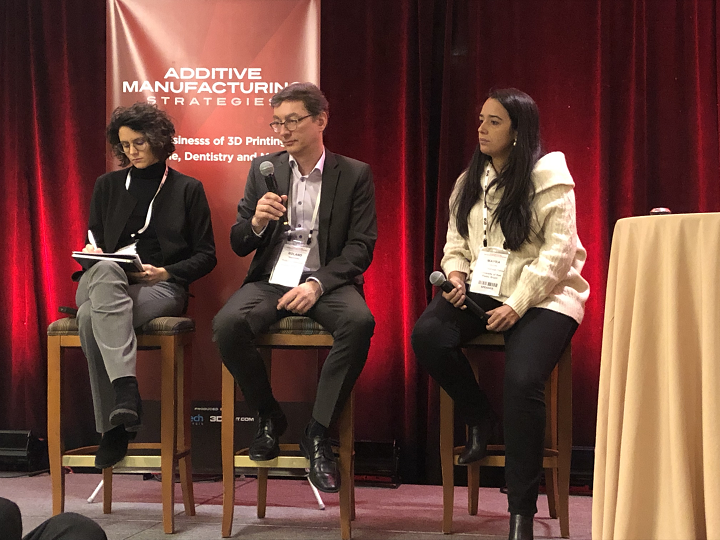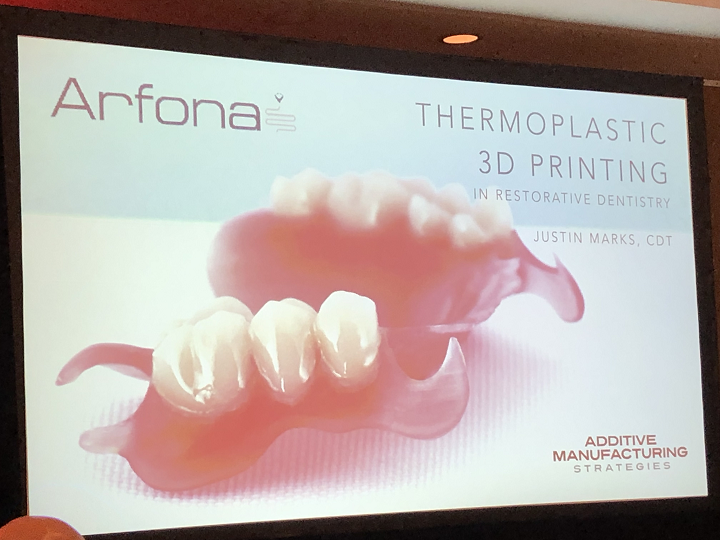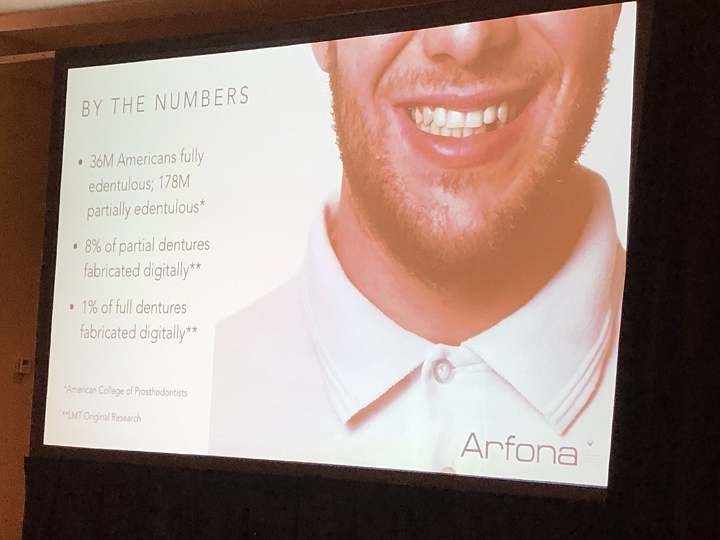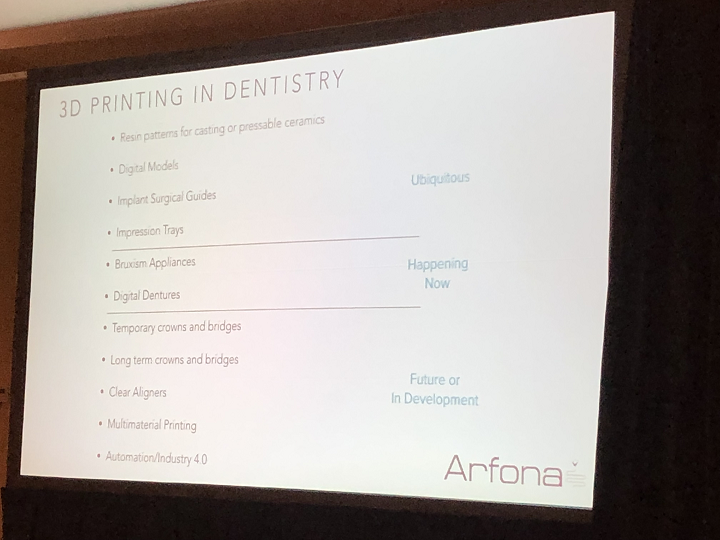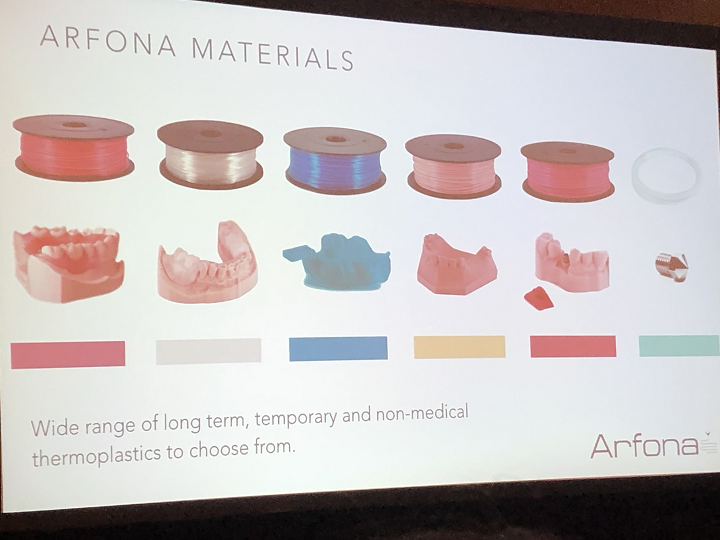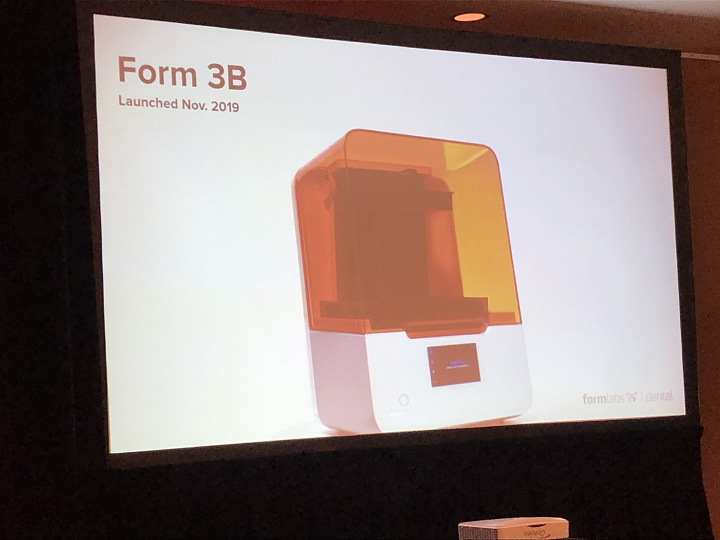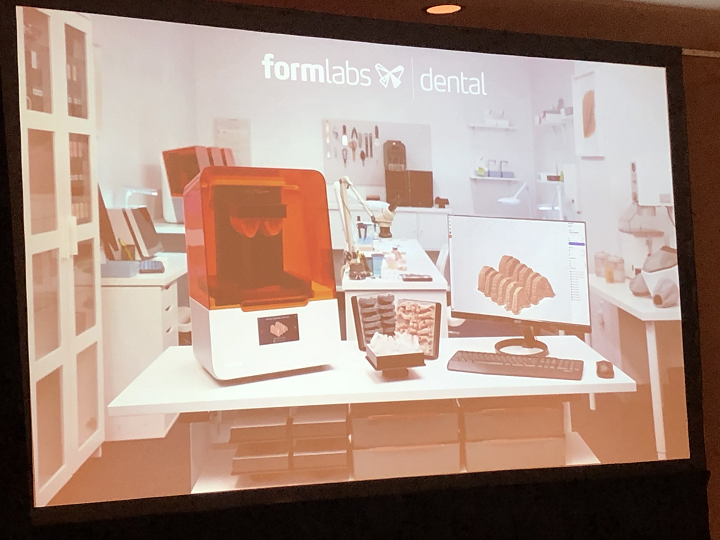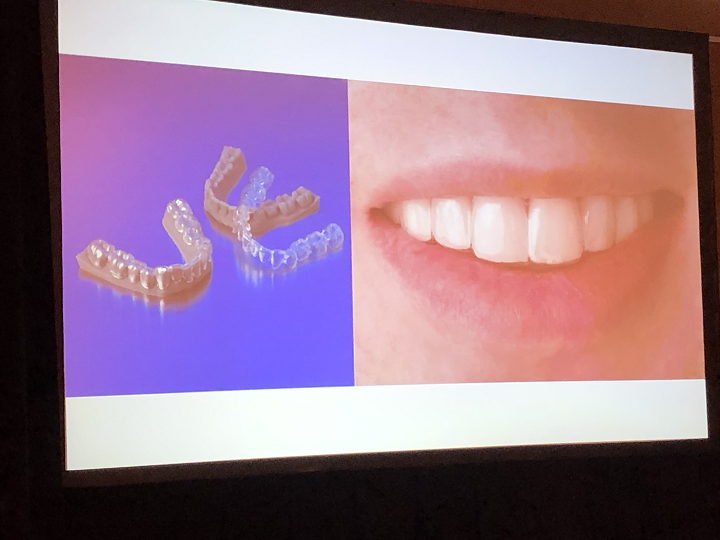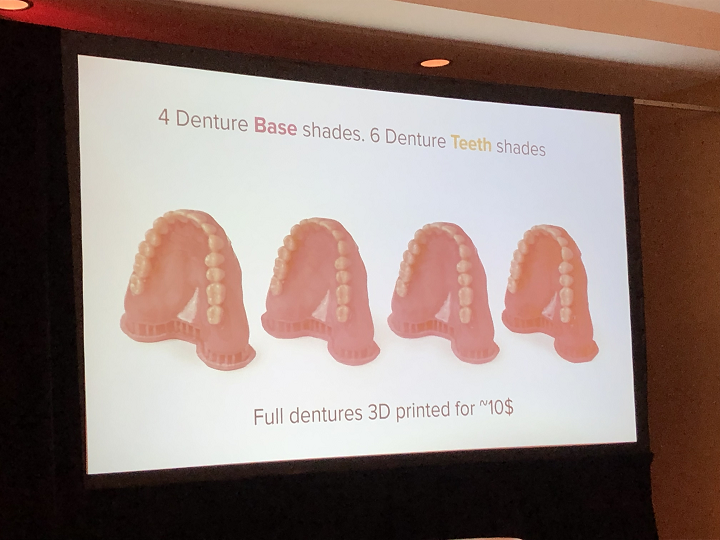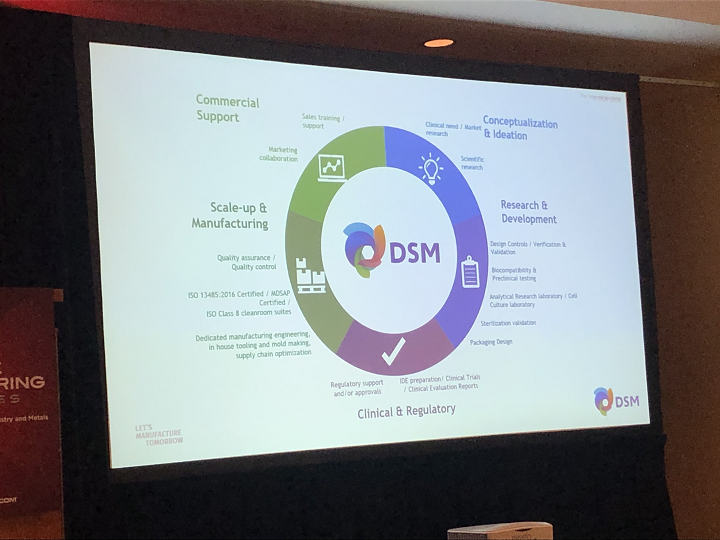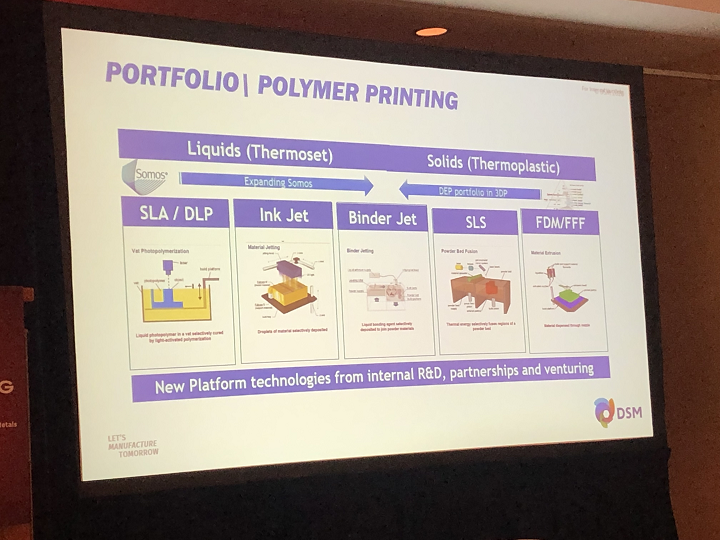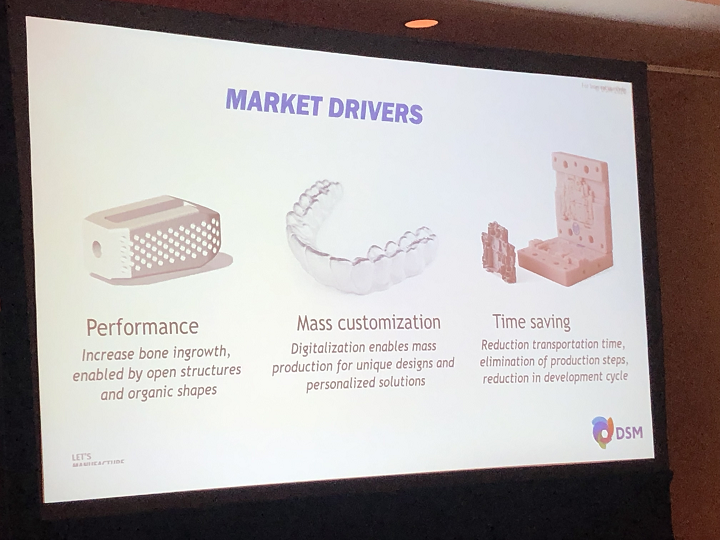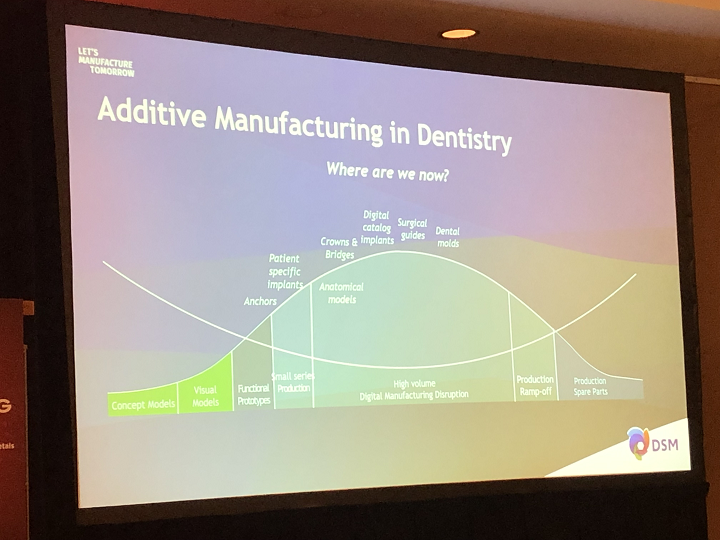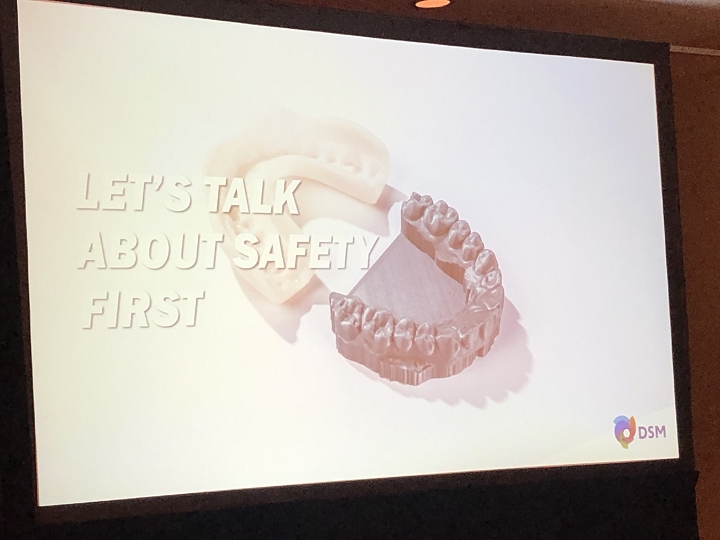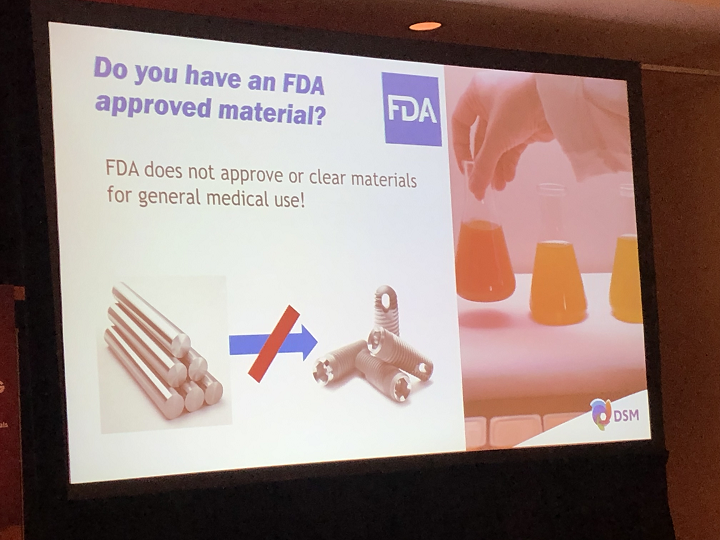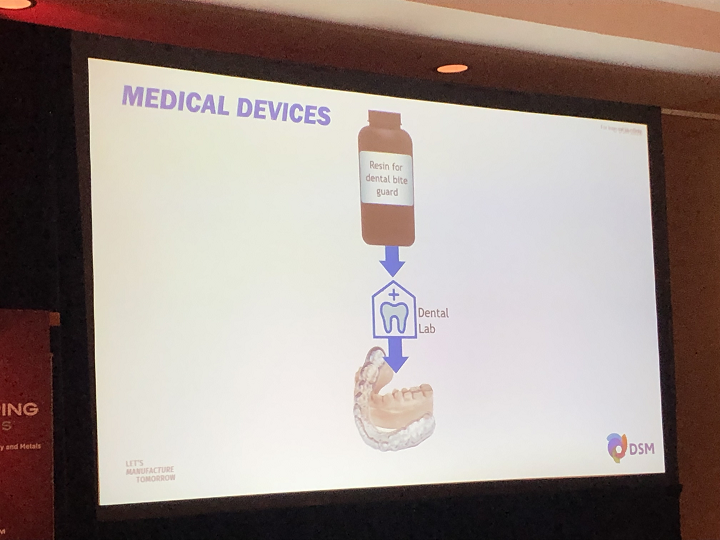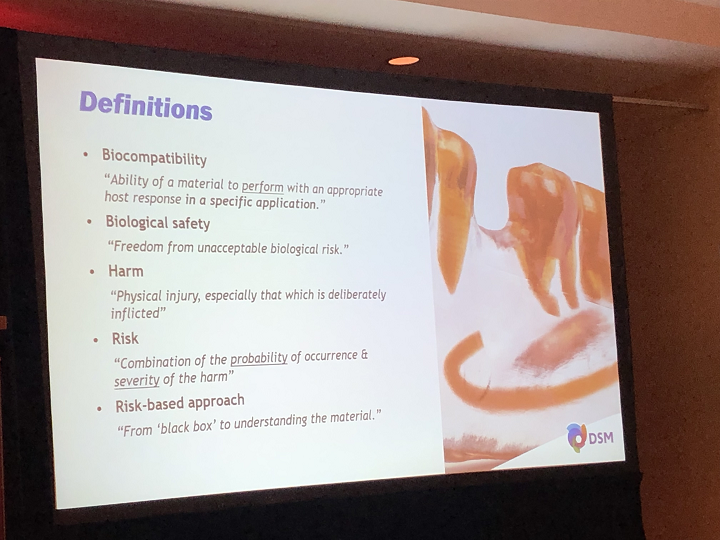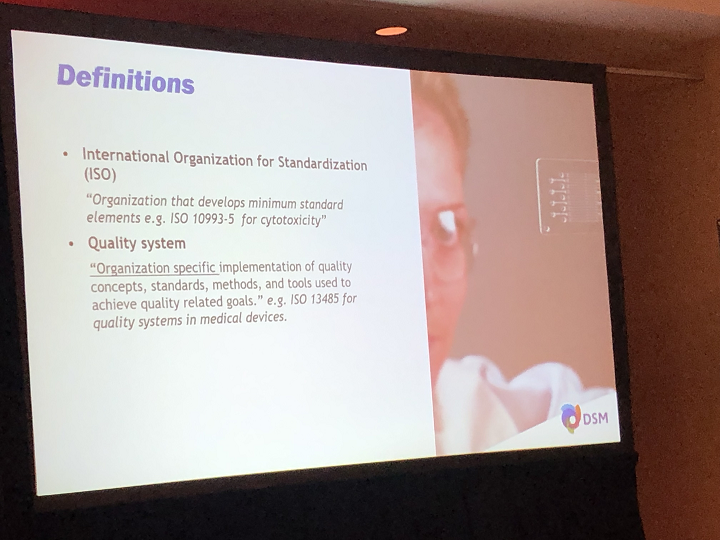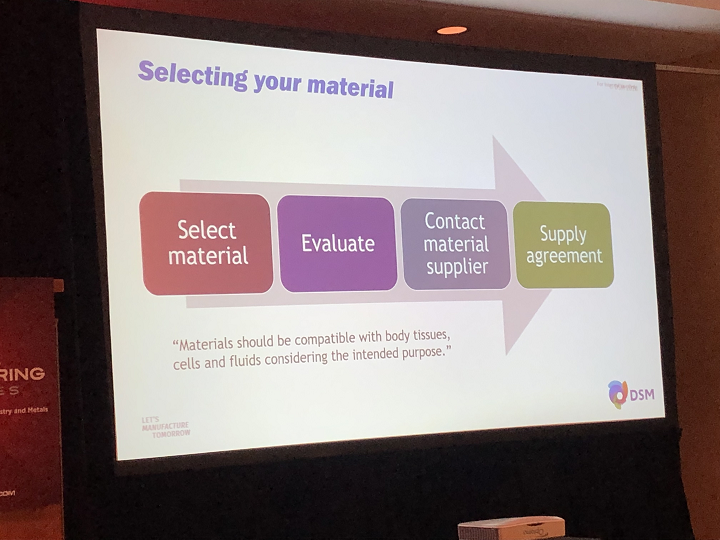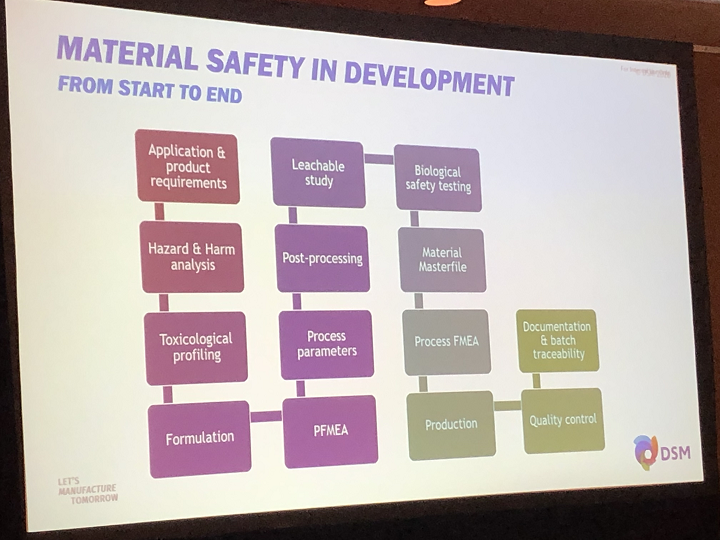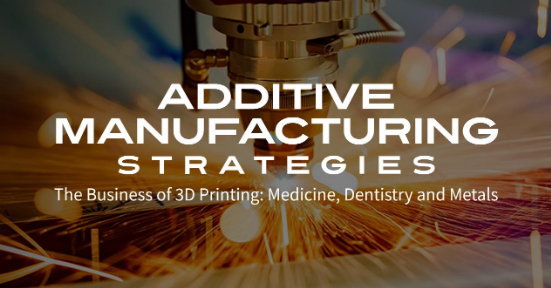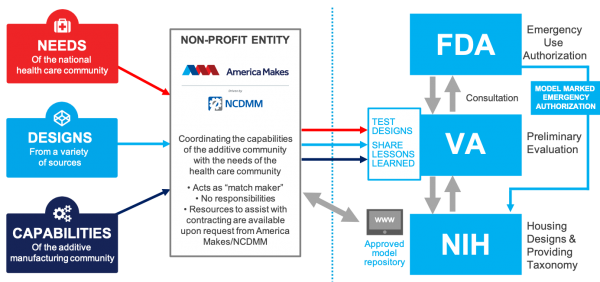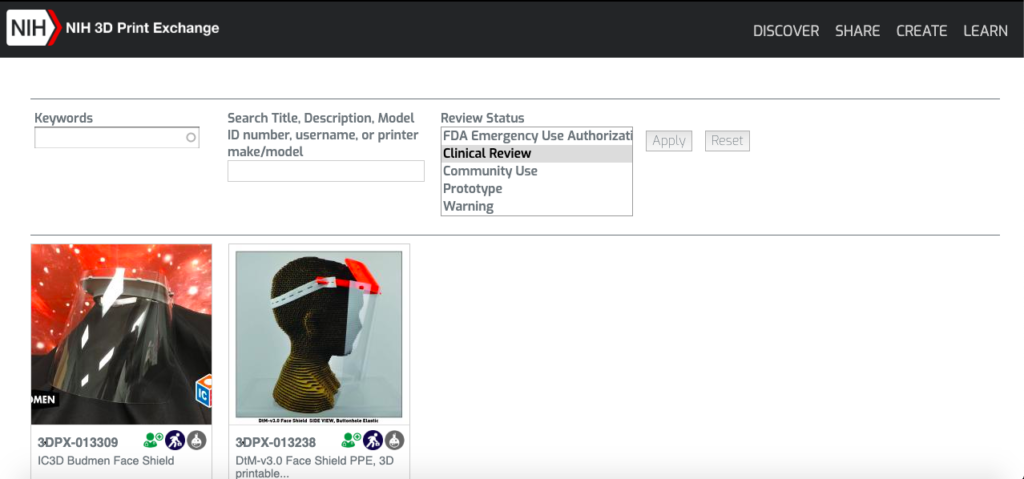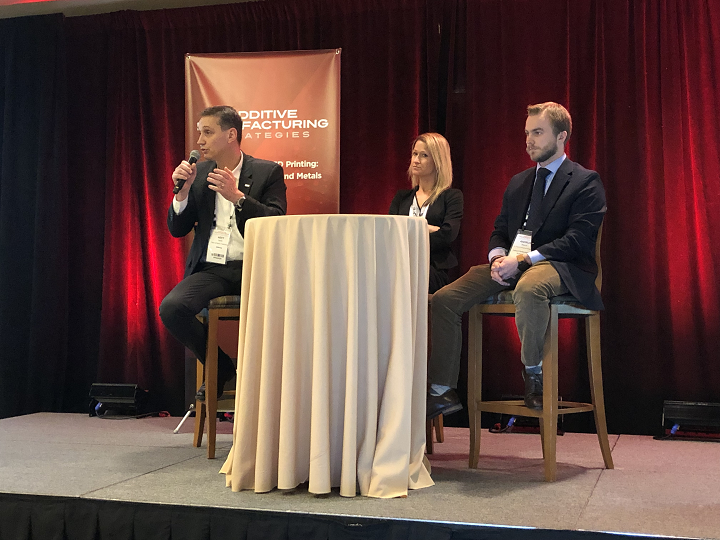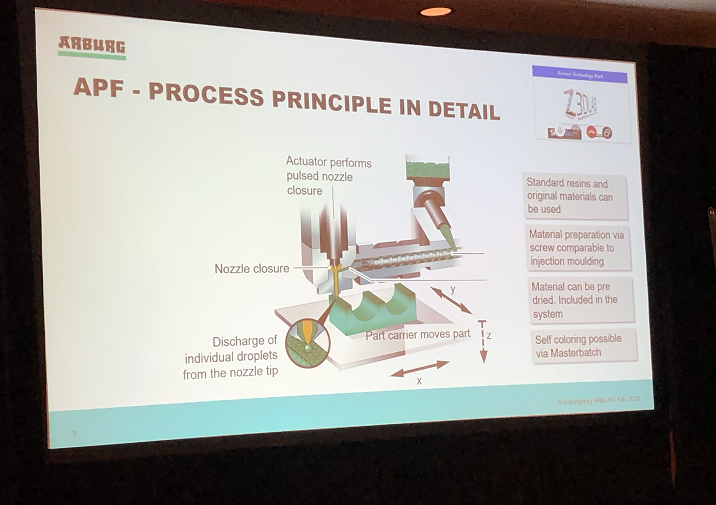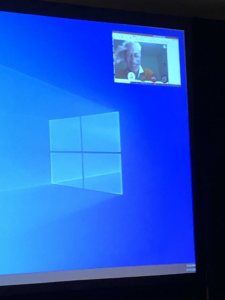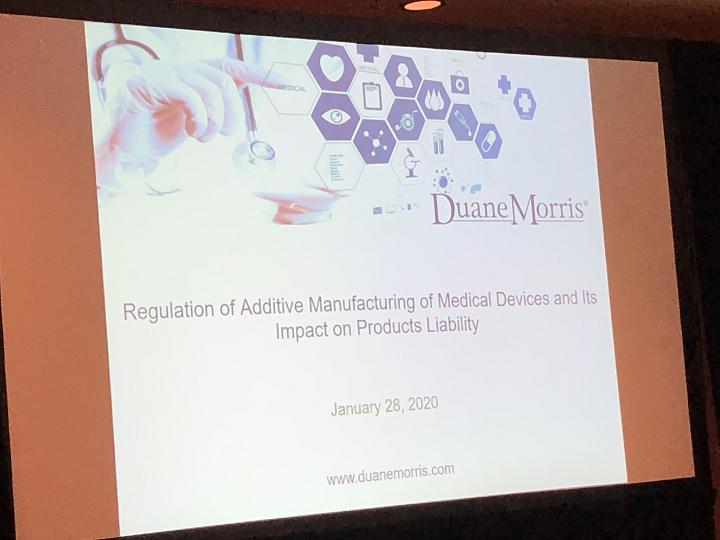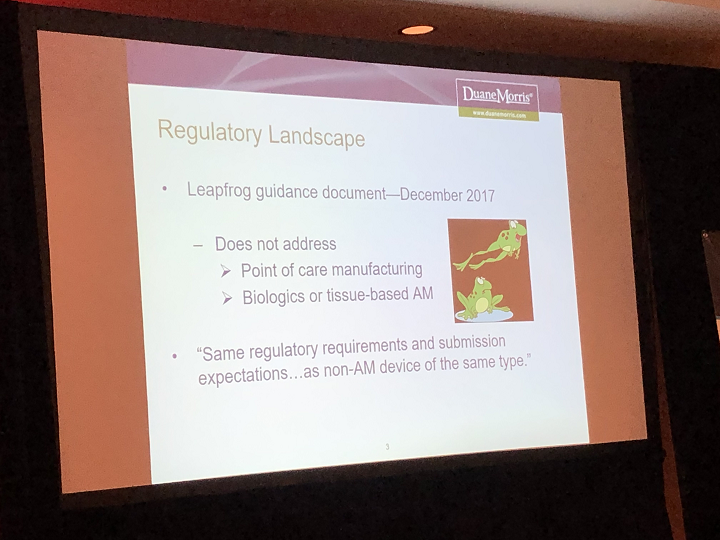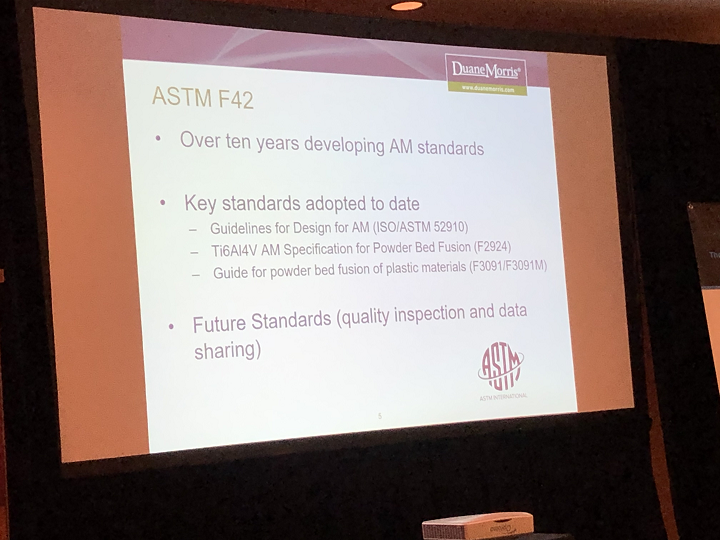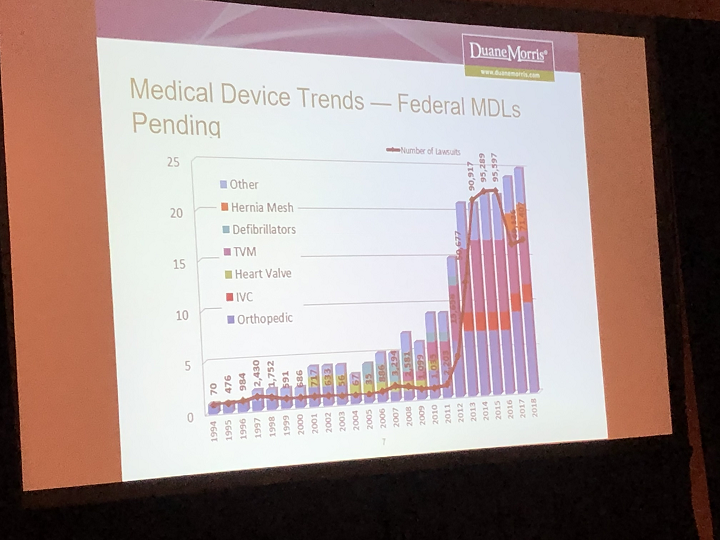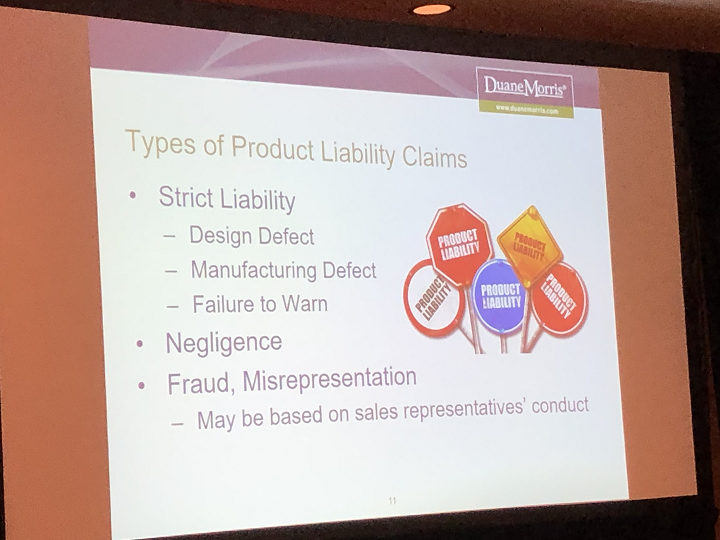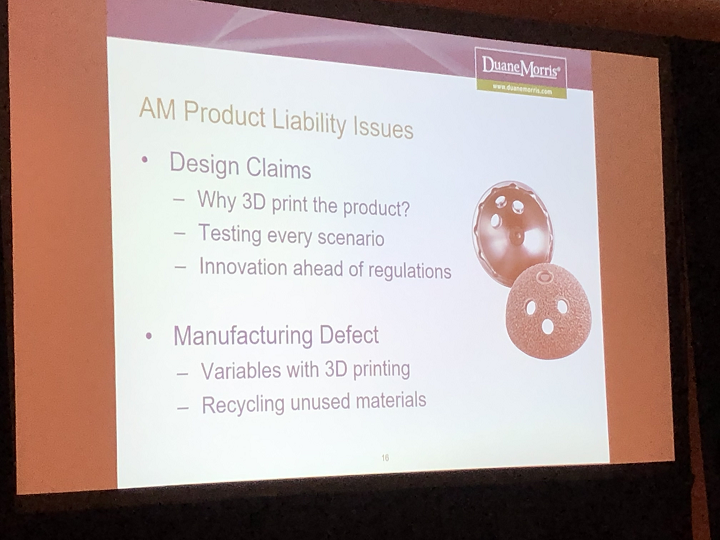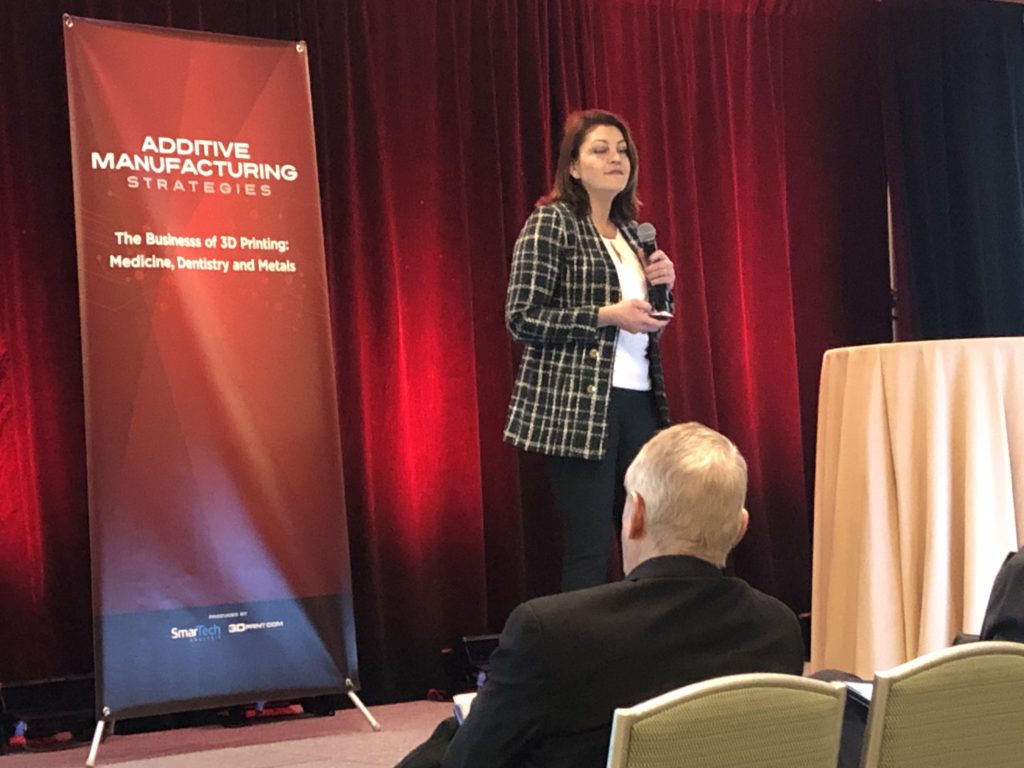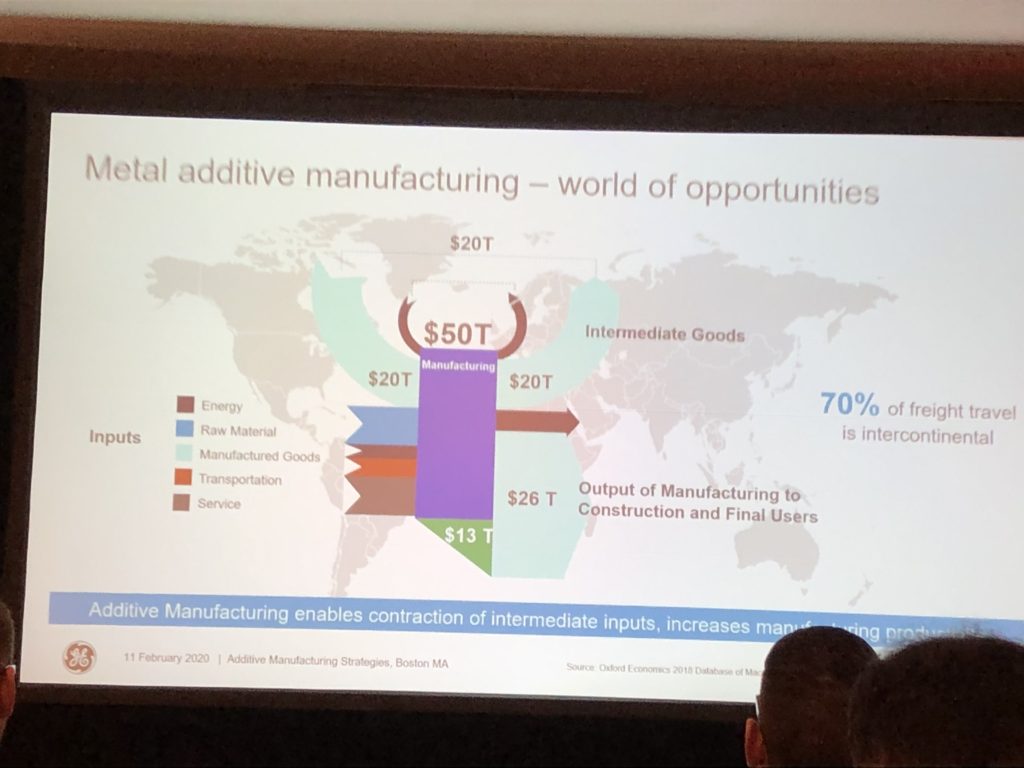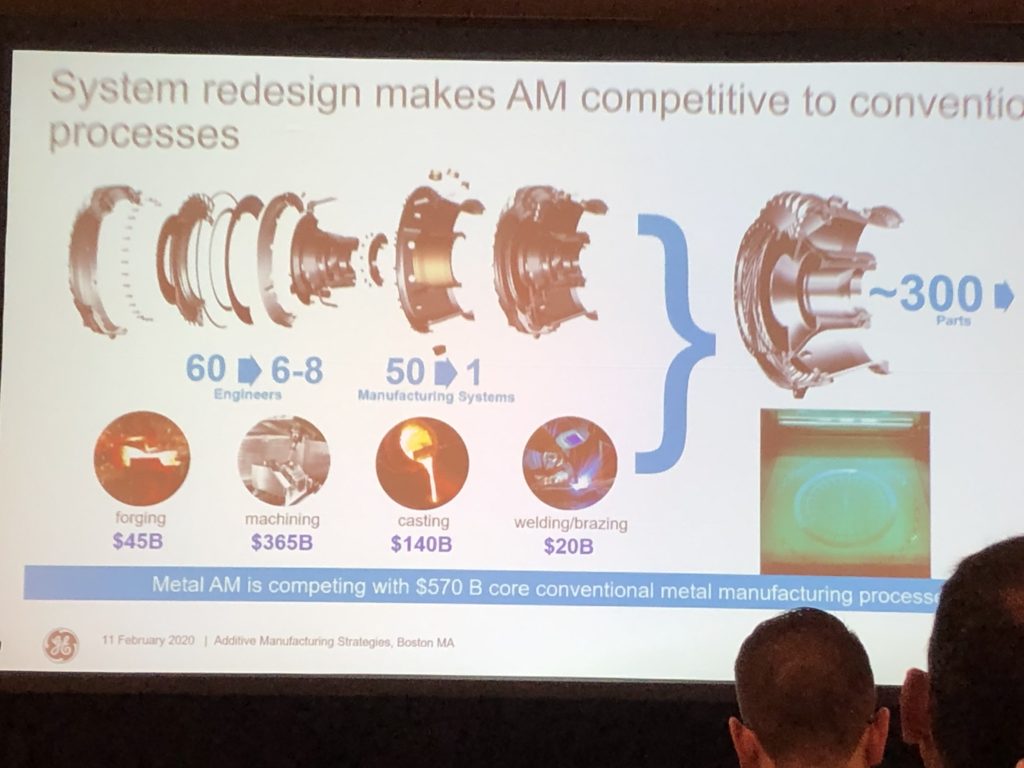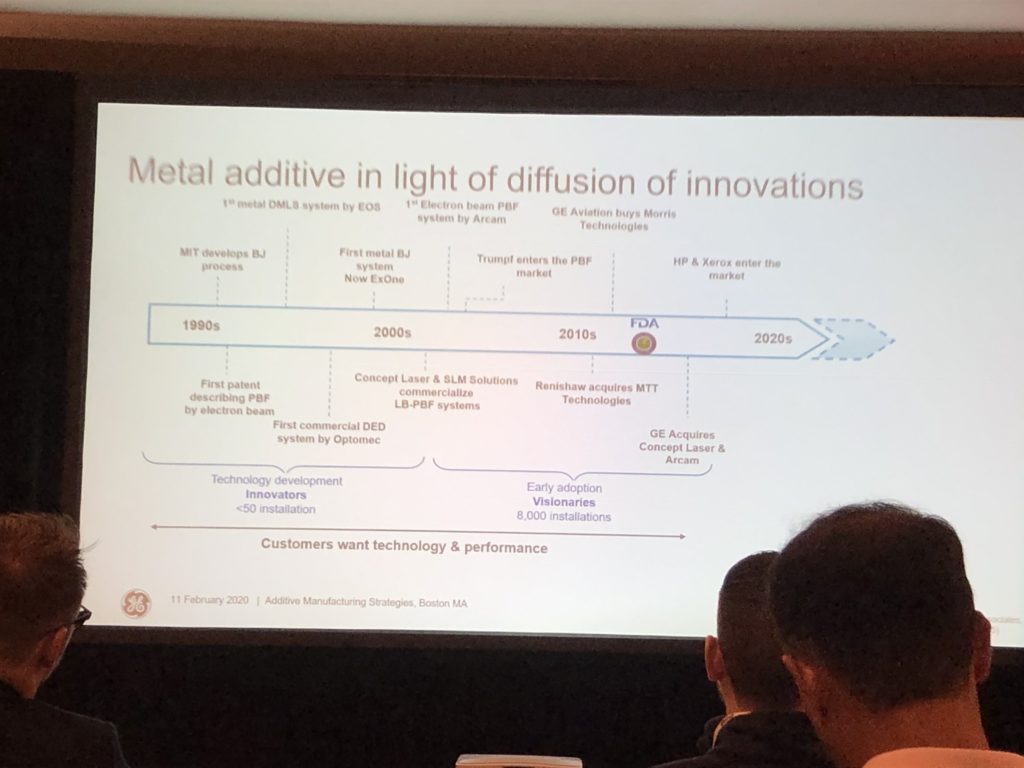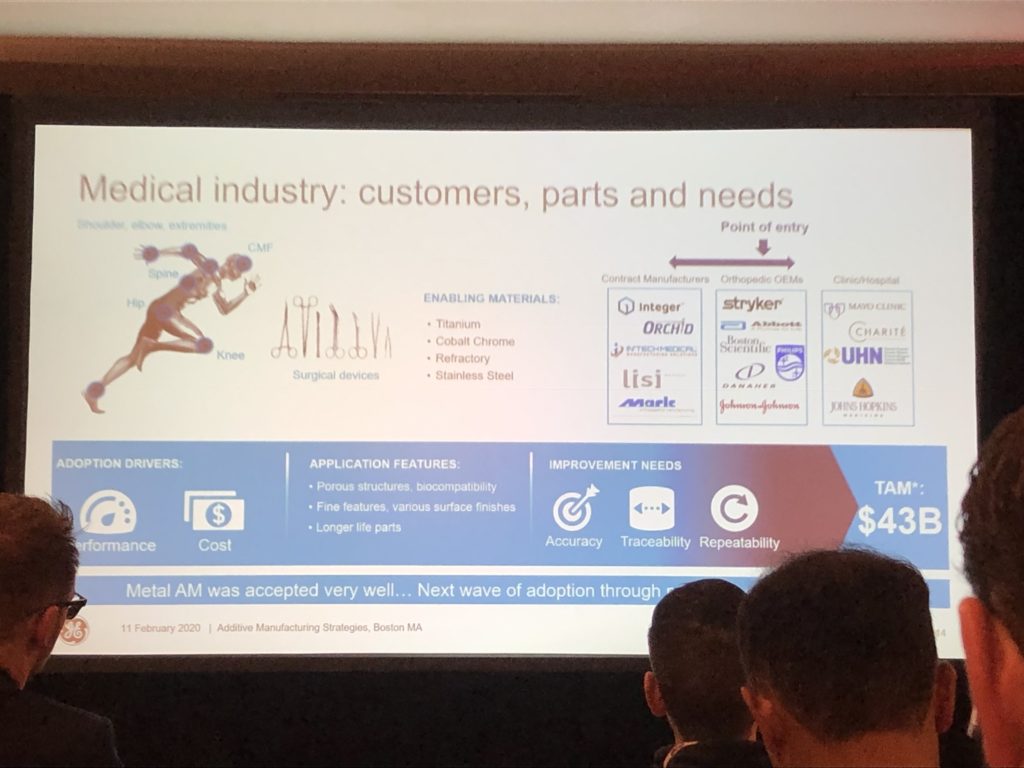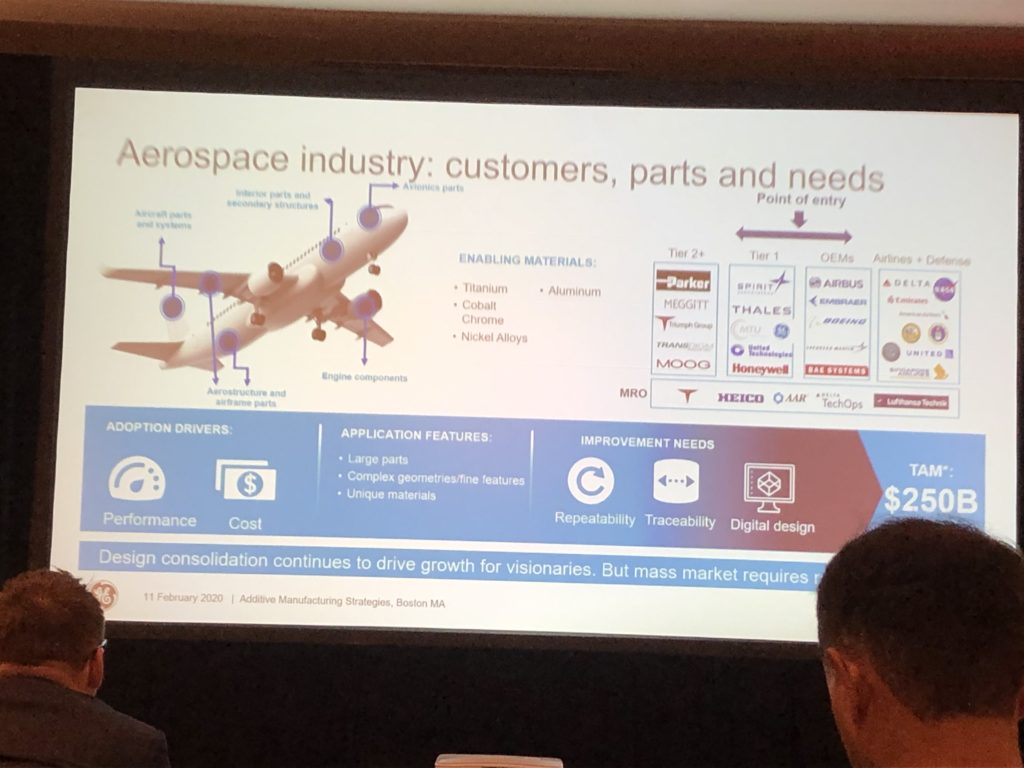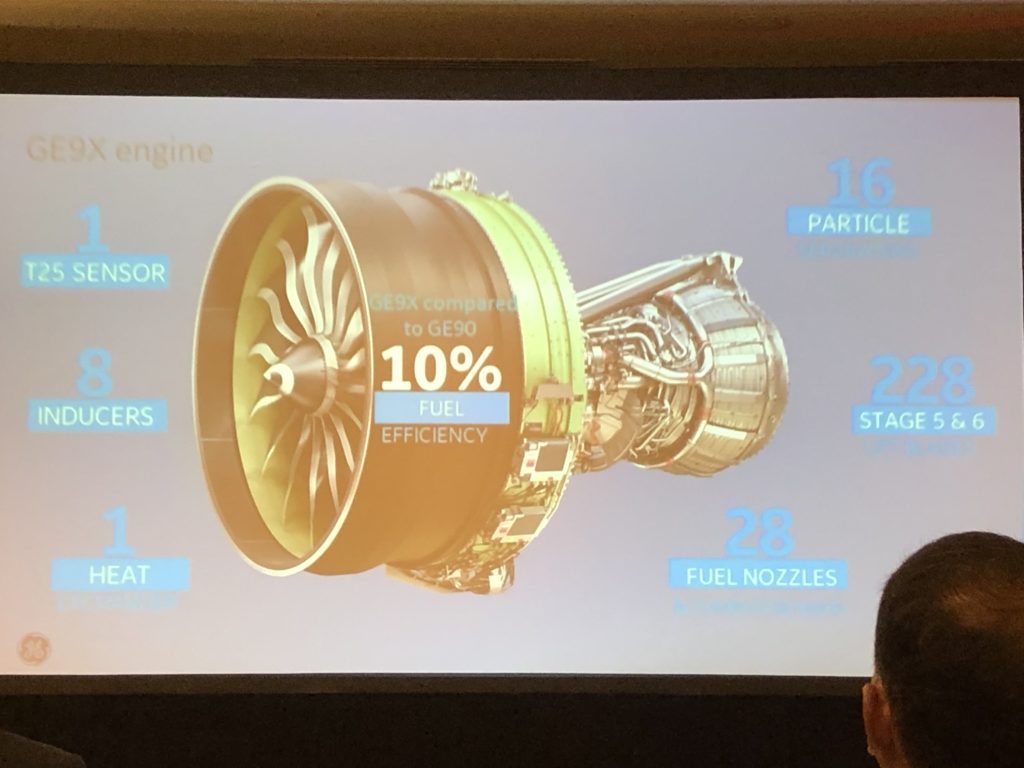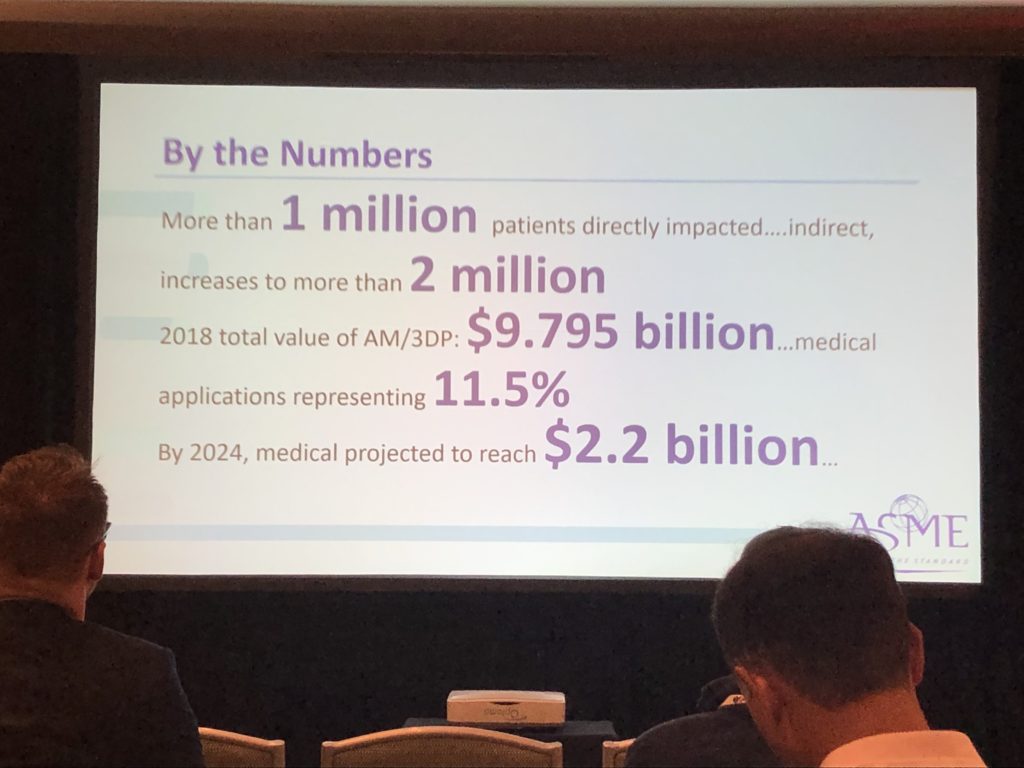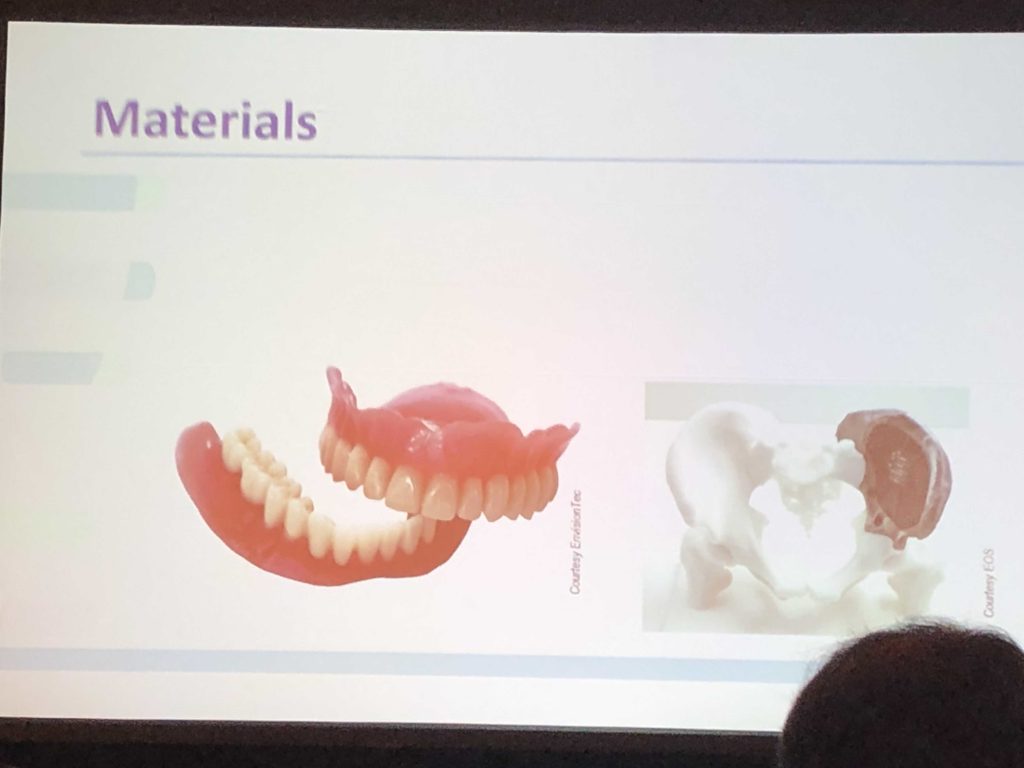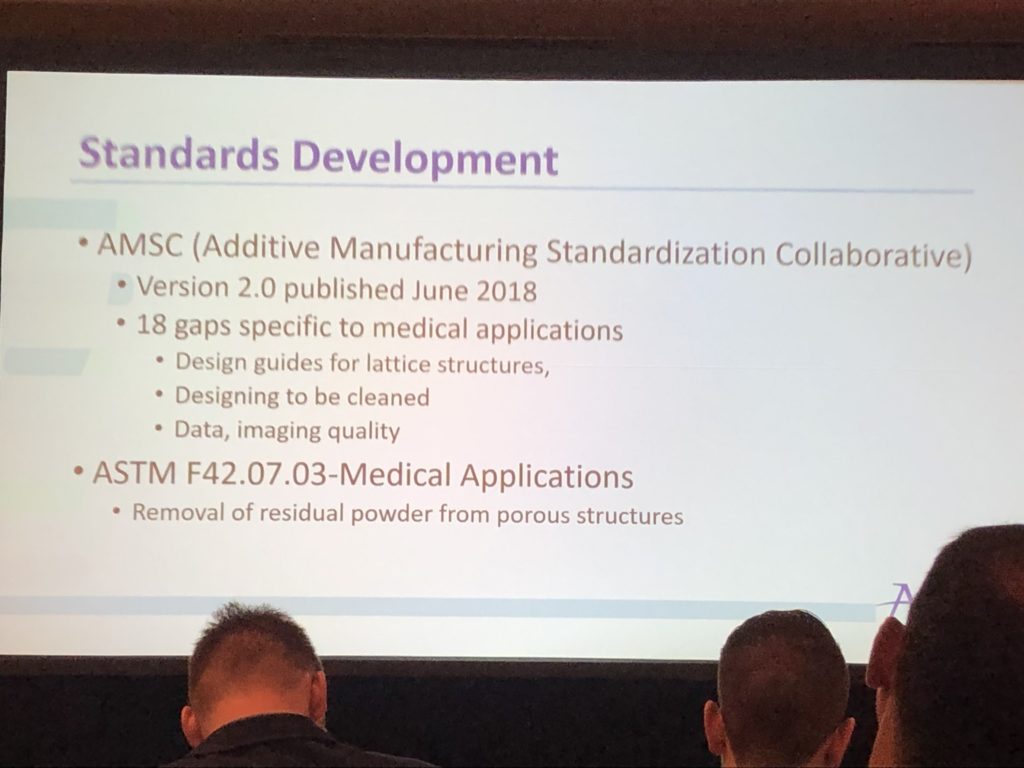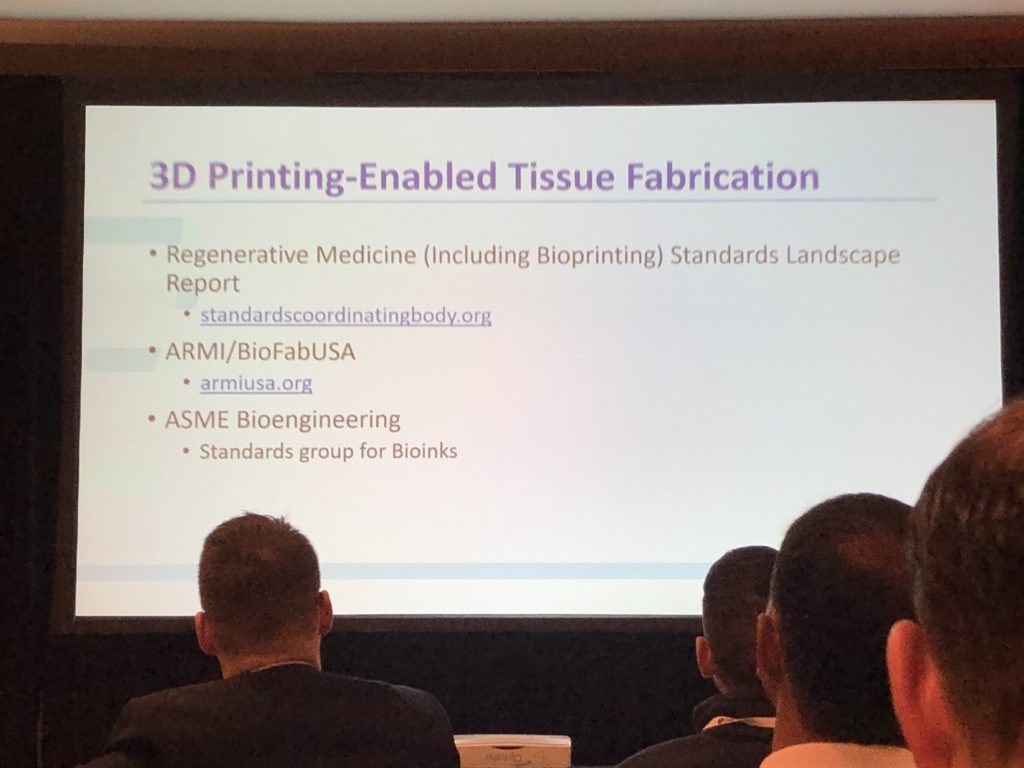3D printing industry news sliced: EOS, ExOne, Materialise, Essentium, Relativity Space, PrintLab, 3D Printz, and more
Beijing researchers 3D print implants capable of inhibiting HPV infection
Safety Recomendations for 3D-Printed COVID-19 Medical Devices, Part One
One of the most important issues that we’ve repeatedly stressed in relation to the 3D printing community’s efforts to fulfill the need for medical supplies amid the COVID-19 pandemic is the need for safety. To understand the precautions that should be taken in relation to various classes of medical devices that are being 3D printed, we spoke with experts from the industry and researched the regulatory guidelines of the U.S. Food and Drug Administration (FDA).
We are still working to expand our knowledge base on this topic, but this is what we’ve learned so far.
Work with medical professionals: In part, we are trying to delineate between the services that can be provided by hobbyists as compared to more expert 3D printing users. To start, we should note that, regardless of the device, designers, engineers and machine operators should work with medical professionals when developing new designs or producing parts. Even if the part is as simple as a face shield, it is important to find a hospital that needs it first, before you start printing. #GetUsPPE has created a script that one can follow to ask hospitals if they need your help and supplies. Please do not needlessly approach your local hospital. Work with local makers and businesses first to find out if they perhaps already have established what your local healthcare providers need. First, check online and contact all of the 3D printing-related businesses locally before you attempt to contact a hospital.
Use medically tested and validated designs: If a part already exists and has been tested and validated, such as headbands for face shields, it is not necessary to reinvent the wheel and a 3D printer user can simply print acceptable designs. The National Institute of Health (NIH) in the U.S. has developed an online file repository for just such a purpose. There are already numerous face shield designs on this site. Please be aware that all files on the site have not yet been tested or validated. Just being on the site does not mean that it works or has been tested. Read the comments underneath a file, as well as the description, to be sure what the limitations and specifics are. On the detail page of the file in question, it should be clearly labeled that the file has been reviewed. Some files on the site have multiple versions floating about elsewhere. Any advice or recommendation on the site must be seen as being specific to the one file in question, not others. Be careful when using different slicing settings, machine settings or opening and reviewing the file in a CAD or 3D modeling program this may alter the part.
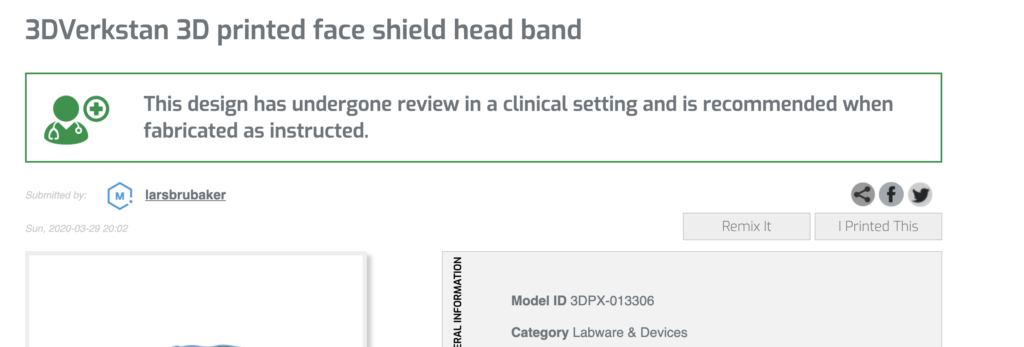
Face shields are safe for hobbyists to make: Based on regulatory classification and the guidance of the U.S. Food and Drug Administration, some products must be limited to facilities with a Quality Management System in place. However, because face shields do not meet this threshold, they are deemed acceptable for hobbyists to print them. In fact, we have come across a number of medical professionals specifically requesting these devices, suggesting their utility. Please do try to use skin approved materials and only obtain materials only from reputable vendors. Please work in a sanitary and clean way and also try to see if you are able to sterilize or clean these masks properly. You not washing your hands properly could have fatal consequences for a person with a compromised immune system.

Healthcare professionals at Columbia University Medical Center/New York-Presbyterian Hospital using 3D printed face shields thanks to the MatterHackers Maker Response Hub. Image courtesy of MatterHackers.
Face masks are NOT safe for hobbyists to make for medical professionals: When it comes to face masks, the 3D-printed variety will likely be considered a last resort based on the FDA’s existing guidance. Exceptions include situations in which medical device manufacturers and/or industrial manufacturers work specifically with hospitals and governments to provide 3D print them (as occurred in the Czech Republic, for instance with Prusa Masks).
The FDA has provided guidelines for face mask usage based on the capacity that a hospital is experiencing, with many facilities facing surge scenarios as a result of the COVID-19 outbreak being told to implement the most extreme methods of face mask supply conservation. This means:
- Canceling “all elective and non-urgent procedures and appointments for which a face mask is typically used by [healthcare personnel (HCP)].”
- Using masks beyond shelf-life dates, re-using masks, and prioritizing masks specific activities, such as contact with an infected patient.
- Alternatives to face masks when supplies have run out, such as face shields, ventilated headboards, and filtration fans, and homemade face masks.
The FDA has provided similar guidelines for protective eyewear, isolation gowns, and N95 respirators.
Face masks are potentially safe for hobbyists to make for NON-MEDICAL uses: Because all face masks with filtration capabilities, such as N95 respirators, are meant to be reserved for medical personnel directly interacting with COVID-19 patients, as discussed above, the general public and non-medical workers must rely on other means to prevent the spread of the disease.
The FDA and Centers for Disease Control and Prevention (CDC) are both recommending that the public wear cloth masks. Though not to the extent possible with surgical masks and N95 respirators, homemade masks prevent the spread of germs by limiting the number of microorganisms expelled by wearers. As a Cambridge University study on the topic explains,
“Face masks reduce aerosol exposure by a combination of the filtering action of the fabric and the seal between the mask and the face. The filtration efficiency of the fabric depends on a variety of factors: the structure and composition of the fabric, and the size, velocity, shape, and physical properties of the particles to which it is exposed. Although any material may provide a physical barrier to an infection, if as a mask it does not fit well around the nose and mouth, or the material freely allows infectious aerosols to pass through it, then it will be of no benefit.”
That said, 3D printer users may be hoping for better protection than can be provided with cloth masks. Essentium, for instance, is providing 3D-printed masks with filtration to local police and firefighters in Texas. The same medical regulations may not apply outside of hospital settings, but we have regulatory bodies to cover industrial goods for a reason. Issues beyond the transmission of viruses need to be considered, such as whether or not a material is allergenic or toxic.
Materials and Workflows Matter: Medical device manufacturers have received regulatory approval for their devices because they have set up the proper facilities with the proper machines and materials for producing their goods. Not all materials and operating environments are suitable for every type of item being 3D-printed in response to coronavirus supply shortages.
3D Systems, for instance, has a Healthcare division that manufactures biocompatible implants, surgical guides, and other devices that have been tested, validated and regulated to meet the safety requirements for use with patients. As Ben Johnson, director of Product Development at 3D Systems Healthcare, explained,
“Face shields likely can be printed in FDM just fine and serve the need of a health care provider just fine, where you can disinfect them. Other types of applications, like face masks or diagnostic tools or other medical device components are likely not acceptable to be manufactured from those types of materials and processes because they wouldn’t meet the essential requirements of those parts.”
While a tabletop fused deposition modeling (FDM) machine is not an unacceptable technology for making emergency supplies, hobbyists don’t typically have the kind of testing and rigor that’s required for specific types of devices, Johnson pointed out. The company uses selective laser sintering (SLS) and nylon to produce many devices like surgical guides and anatomical models and does so within a controlled environment that has been registered with regulatory authorities including the US FDA to make medical devices. The company uses its specific variety of nylon because it is non-cytotoxic (not toxic to cells) and non-allergenic to the user.
According to Johnson, it is less about the 3D printing technology and more about the workflow, processing of parts and the management of that processing:
“What you see in [3D Systems’ Littleton Healthcare Technology Center] is a facility that has controls from everything on how you operate, the equipment, how you manufacture the parts, how you clean the parts, and how you package and ship the parts. And that’s the type of control that’s required for the manufacture of medical devices, like surgical masks and face masks that are compliant with standards. It’s less about the technology and more about how you deploy that technology to make medical devices that are safe and effective.”
Disinfection vs Sterilization: Most of the devices being made by the 3D printing community to not need to be sterilized, which involves placing parts into an autoclave and exposed to pressurized saturated steam at temperatures of approximately 121 °C (250 °F) for about 15–20 minutes. Additionally, all of the medical devices being printed in response to the virus, must be disinfected by healthcare staff, which can involve immersion in a solution of water and household bleach or wiping down with alcohol, but depends on the actual device itself. For instance, N95 masks degrade when exposed to alcohol, but could be disinfected using warm humid heat and ultraviolet germicidal irradiation or hydrogen peroxide vapor. Likewise, these kinds of processes when undertaken should not be improvised and as tightly controlled as is possible.
For those wishing to provide supplies using 3D printing in the U.S., designs can be uploaded to the NIH 3D Print Exchange for validation, while manufacturers can visit the America Makes website to lend manufacturing capabilities. Hobbyists can work with #GetUsPPE to connect with hospitals. Johnson suggested that going through the America Makes/NIH/VA coalition in the U.S. might be the best way to participate because “files and designs will get tested and validated by the VA with America Makes helping to connect the dots between those in need and those that can provide. So it’s great for public visibility of a government-controlled type of forum for people to upload design files and for people to figure out how they can help.”
Menno Ellis, senior vice president and general manager of Plastics for 3D Systems, made the following suggestion of people hoping to lend their support to the supply efforts:
“I would impress upon people that as they consider making things, that they really look at the available documentation for their equipment and their materials or do research before they start printing things; particularly things that are going to come into direct contact with patients or care providers. There is a real risk of doing harm from items made by just grabbing something off the shelf and promoting it as a solution.”
We will be following up this article with an interview with a member of the Veterans Affairs team. We welcome all comments and criticism regarding the information provided here and look forward to expert readers to provide us with further information regarding the safety of 3D printed medical devices made in response to COVID-19-related supply shortages. Feel free to email the author at michael@3dprint.com.
The post Safety Recomendations for 3D-Printed COVID-19 Medical Devices, Part One appeared first on 3DPrint.com | The Voice of 3D Printing / Additive Manufacturing.
AMS 2020: Panels on 3D Printing Materials and Applications for Dental Industry
At our recent Additive Manufacturing Strategies 2020 in Boston, co-hosted by SmarTech Analysis, many different topics were discussed in keynotes and panels, such as binder jetting, medical 3D printing, and different materials. Dental 3D printing was also a major topic of discussion at the event, and I attended three panels that focused on additive manufacturing for dental applications.
The first, “Into the dental and oral surgery office,” had three panelists: Dr.-Ing. Roland Mayerhofer, the Product Line Manager for Coherent/OR Laser; CEO Manager of Oral 3D Martina Ferracane; and Mayra Vasques, PhD, a dental prosthesis fellow at the University of São Paulo in Brazil.
Dr. Mayerhofer went first, and provided a quick overview of Coherent’s laser powder bed fusion (L-PBF) systems, and the dental applications for which they can be used.
The versatile CREATOR is the company’s open system, and can print with multiple materials, such as brass, cobalt chromium, steel, and Inconel.
“As long as it works, you can put any powder in you want,” Dr. Mayerhofer said about the 3D printer.
He explained said that the CREATOR setup is “typical but can be as big as a stand-up fridge, not the American double-size.”
You can take a look at the rest of the printer specs above, along with a few features that will be added to the new system that’s coming in 2021, such as two powder hoppers and a build platform.
“Then you can take them out, put fresh hoppers in, and keep going,” Dr. Mayerhofer said.
He stated that the dental field is likely one of the first major adopters of metal additive manufacturing, as the technology offers 100% personalization and can fabricate small, complex parts out of existing materials, like titanium alloys…all perfect features for the dental industry.
Dr. Mayerhofer then discussed Coherent’s digital dental workflow, which can get from scanning to a completed 3D printed part in 12 steps. Some of these steps include designing the CAD file and preparing it for 3D printing in the company’s APP software suite.
Later process steps are annealing, and then sandblasting, support removal, polishing, ceramic coating – added manually – and voila, you have a finished product.
The Dental Cockpit is Coherent’s latest addition. The CAM software makes it easy to load and print parts, which means that the digital dental workflow as a whole is much less complex. There’s one click to select the file, another to choose the materials and properties, and then a final click to generate the G-code.
Dr. Mayerhofer said that Coherent’s whole dental workflow, 3D printing on the CREATOR include, takes just one work day to fabricate a completed bridge in the dental lab.
After the cast skeleton is scanned, the dental lab begins preparing the CAD data at 8 am. Then the print job has to be prepared in Dental Cockpit, and 3D printing typically begins in the morning.
Once the parts are removed from the print bed, post processing is completed, and then a porcelain coating is added before the product is subjected to heat treatment and polishing. The completed bridge is then ready to go by 4 pm.
Dr. Mayerhofer noted that a dental lab’s ROI on the CREATOR 3D printing system is less than a year…typically about six months, in fact.
Then it was Ferracane’s turn to explain how her company, Oral 3D, makes 3D printing simple for dentists, even as it’s occurring at the industrial level.
“Our solution makes it extremely simple for dentists to bring 3D printing to their practice,” she said.
She presented a brief overview of the US dental market, noting that some of the major applications for 3D printing in the field include aligners, crowns, surgical guides, and soft tissue models, which dentists use to test procedures ahead of time.
“Usually today, the way most of these models are done is through intraoral scanning,” she explained.
Ferracane said that SLA technology makes it much easier to make these soft tissue models. But, even so, they can still only be used for testing purposes most of the time.
3D printed models of hard tissue – bone – are also fabricated, but she said that they’re not used often, as it’s difficult for dentists to come up with STL files of just the hard tissue.
She pulled up a slide that had the world “PROBLEM” across the top. The image appears to be scan data of bone, which looks pretty hard to read.
“It’s not easy for dentists to make this into something printable by cleaning up the images,” Ferracane explained. “So they can pay to outsource it to labs to clean it up. But our 3D printing software automatically does this. Just drag the CT scan, and we’ll take care of changing it from DICOM to STL. With one click, we can then convert STL to G-code.”
She said that while it’s obviously good to fabricate dental applications this way using Oral 3D’s printer, it will work with whatever system you’re already using.
These 3D printed models serve a variety of purposes – they can improve communication with patients, help in treatment planning, and even “broaden learning.” Ferracane mentioned that the company has partnerships with NYU and Harvard for this last.
Other applications include bone blocks, made-to-measure titanium membranes, and maxillofacial surgery. Additionally, she stated that Oral 3D recently began collaborating with dental surgeons, who use the company’s 3D printed dental models for planning and patient communication.
She finished by stating that the company believes FDM printing can “be a good value add for dentists.”
Vasques finished things by sharing her research into how things look, dental 3D printing-wise, from the point of view of clinicians.
“It’s common for most to be scared of using 3D printing,” she explained. “They think it’s plug and play, and it’s not.”
For her research, she divided users into two separate groups – high level experience (seniors), and innovation (early adopters and students).
“We are trying to figure out how these people understand the technology,” she said.
High level users expect accuracy, efficiency, high quality technology, and high-performance materials for the purposes of chairside 3D printing. Vasques said that these users “don’t want to wait 2-3 hours to make products by hand.”
“In university, we’re trying to establish protocols and research to help these people have the results they are expecting.
“We’re trying to solve problems, like mouthguards for sports.”
Vasques said that last year, she and her team published three articles about dental 3D printing topics, such as 3D printed occlusal devices and post-processing. She launched INNOV3D the same year, in order to help train professors in using dental 3D printing.
“We have an online training platform, educational materials, and 3D lab,” she stated.
Once she finished and sat back down, Davide Sher, the panel’s moderator, asked the other two panelists how they would address the challenges that Vasques listed, and how they would make dentists understand more about dental 3D printing.
Ferracane answered that most dentists aren’t buying 3D printers today, because they’re initially taught that the systems are really easy to use when they’re not. Once they run into issues with SLA technology, they get frustrated and just start outsourcing the work instead.
“Then they’re really dissatisfied, because they’re complicated and not just plug and play. We need to help them understand that they can bring the technology back to their office.”
Sher noted that dentists don’t really have the time to learn about the more advanced types, and so asked if the companies directed their technology to users in dental labs; Dr. Mayerhofer said yes.
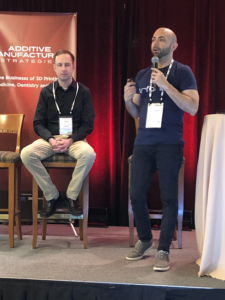 After a short break, the next session, “Dental lab experiences with 3D printing,” began. While Les Kalman, an Assistant Professor for Restorative Dentistry at Western University’s Schulich School of Medicine, was unable to make AMS 2020, Arfona founder and CEO Justin Marks and Sam Wainwright, Dental Product Manager for Formlabs, were both ready to go.
After a short break, the next session, “Dental lab experiences with 3D printing,” began. While Les Kalman, an Assistant Professor for Restorative Dentistry at Western University’s Schulich School of Medicine, was unable to make AMS 2020, Arfona founder and CEO Justin Marks and Sam Wainwright, Dental Product Manager for Formlabs, were both ready to go.
Marks went first, explaining that Arfona, founded in 2017 by dental technicians and 3D printing enthusiasts on “the core belief that thermoplastic dental materials should not be substituted for inferior photopolymers,” has been working to “bring 3D printing into the world of dentistry.” The company’s flagship product is its 3D printed flexible nylon dentures.
He pulled up a slide that cited research stating that 36 million Americans are completely edentulous, meaning without teeth, and that 178 million are partially edentulous. But even so, Marks said that there’s an “astronomical” number of people who are still not wearing dentures.
“Most people don’t think about this until it happens to you or someone you know,” he said about missing a tooth. “It’s not always that easy or cheap to fix this with implants.”
According to a survey, only 8% of dentures are digitally fabricated, which means most are still made by hand using analog methods.
Marks said that even though 3D printing is “becoming more of a buzzword” in the dental industry, most of the materials “have largely stayed the same,” and based on the same technologies and principles. Extrusion-based AM is not used often in dentistry, and powder bed fusion (PBF) is mostly limited to metals, not polymers.
Marks went through a brief history of 3D printing in dentistry. Ubiquitous applications include impression trays, digital models, and resin patterns for casting, while digital dentures are currently happening and things like clear aligners, temporary and long-term crowns and bridges, and multimaterial printing are in development for use in the future.
He said that the ubiquitous ones have one thing in common – they’re used once and then thrown away.
“We’re still not doing much with crowns and bridges,” Marks said. “Clear aligners are the holy grail, and direct printing of the aligner is still a ways off, though all companies are probably working on it.”
Aronfa’s dental 3D printer is the r.Pod, which is a modified version of a Makerbot clone. The dual extrusion filament system is optimized for all of the company’s thermoplastic materials.
Then it was Wainwright’s turn to talk about dental 3D printing at Formlabs. He agreed with Marks that “FDM and thermoplastics have an incredible place” in the dental industry.
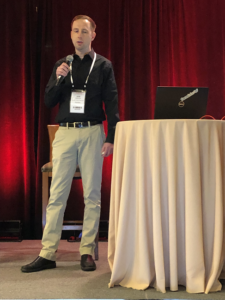 When the company was founded in 2012, its goal was to make professional-scale 3D printing accessible and affordable for everyone. Now Formlabs employs over 500 people at its multiple locations around the world, and has sold more than 50,000 3D printers.
When the company was founded in 2012, its goal was to make professional-scale 3D printing accessible and affordable for everyone. Now Formlabs employs over 500 people at its multiple locations around the world, and has sold more than 50,000 3D printers.
Wainwright explained that the Form 3B desktop printer, optimized for biocompatible materials, has many dental-specific features, materials, and software, in addition to automated washing and post-curing systems “to help tie in end-to-end dental workflows.”
In addition, Formlabs offers dental materials, and launched its dental service plan (DSP) along with the Form 3B in 2019. Because there are high demands, the 3D printing process is complex, and the DSP offers support.
“We are committed to 3D printing for dental,” Wainwright stated. “We have over 20 people in the dental business unit. But we have the resources of a 500 person-plus company.”
While most are made overseas, Formlabs Dental is now developing photopolymers in my home state, since the company acquired its main material supplier, Ohio-based Spectra Photopolymers, last year. Formlabs’ biocompatible Surgical Guide Resin is the company’s first material made in an ISO-certified facility.
“It’s exciting to have intimate control over design aspects,” Wainwright said.
The image above is an example of the Surgical Guide material. Wainright explained that the light touch supports are very easy to remove, which means that there isn’t a lot of time wasted in post-processing.
He said that 36% of dental labs in the US use 3D printing technology, which makes them very “cutting edge.”
“There’s a ton of market opportunity for dental to go digital,” he said. “We have 30% of this market – we’re the biggest player in dental laboratories and will continue to grow, but compared to Invisalign, it’s not really that much.”
So far, Formlabs has 3D printed more than 10,000,000 parts for the dental industry. Wainwright predicts that in ten years or less, “everything in dental will be 3D printed.”
He reiterated to the room that Formlabs has “a whole host of materials” for dental applications, four of which are solely for fabricating models, which are “really critical to dentists.” As dental offices adopt intraoral scanning technology, it’s helpful to take the scan data and turn it into something physical. Wainwright mentioned that Formlabs’ Grey Resin can achieve fast, accurate prints, and that it’s good for thermoforming as well.
The company’s Draft material is “accurate enough to create models in less than 20 minutes,” which makes it perfect for creating retainers on the same day as a patient’s appointment. Model Resin is good for accurately restoring dental models, while the biocompatible Dental LT Clear Resin can be used to print occlusal splints in addition to models.
Formlabs’ Digital Dentures solution comes in multiple shades to match a patient’s teeth, and a full set can be 3D printed for less than $10, which Wainwright says is “really a game-changer.”
“We want to make treatments easier, better, and faster,” he said in conclusion.
“3D printing is still very early in dental, this is just the beginning. The materials will just keep getting better, it’s an exciting place to be.”
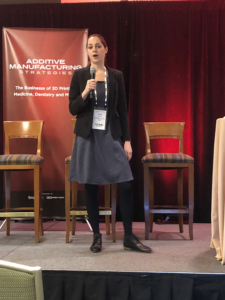 Then it was time to eat lunch and chat with other attendees…or, as I did, inhale food and then find a spot in the hallway near an outlet and get a little work done.
Then it was time to eat lunch and chat with other attendees…or, as I did, inhale food and then find a spot in the hallway near an outlet and get a little work done.
After the lunch break, I sat in on my last panel at AMS 2020, “3D materials for dental applications.” It was a panel of one – Gabi Janssen, Business Development Manager and Global Leader, Healthcare Segment Additive Manufacturing, for DSM Additive Manufacturing. She presented on digitalization in healthcare and dentistry.
She tried to play a short movie about what the company does, but due to technical difficulties there was no sound, so she narrated instead, explaining that DSM is “a material company” that also does a lot with nutrition – a brand behind the brands.
The company also has a biomedical department, which helps deliver advanced healing solutions for AM applications, including bioceramics, collagen, polyethylenes, polyurethanes, and hydrophilic coating.
“What we have on the market is filaments,” Janssen said, pulling up a list of the dental materials DSM offers.
Several of the company’s products are geared toward the healthcare market, such as Somos BioClear for dental guides and anatomical models.
“So how do we develop a new material?” Janssen asked. “We’ve discussed 510(k) clearance materials, and you have to work all together. We look at the application, and determine what we need – printer, software, material – to fit what the end user needs.”
She pulled up a slide of the major market drivers in 3D dental printing – performance, mass customization, and time-saving.
“What kind of applications do we have in dentistry?” she asked.
To answer her own question, she showed a brief history of digital dentistry, starting with the first 3D printed part in 1983, moving on to DSM’s 3D printing resin in 1988, the beginning of aligner manufacturing in 1997 and medical modeling in 2000, and DSM’s dental materials passing USP VI in 2008. For 2020 and beyond, hopefully we’ll see the availability of direct aligner materials.
“I think there’s still a lot of data needed to show it’s good,” Janssen said about where the industry currently stands. “Reimbursement is difficult, we need this data to back it up.”
The topic of FDA clearance obviously came up a lot at AMS 2020. Janssen said that DSM has a resin that’s certified for use in dental bite guards, and a general purpose resin that isn’t certified but can be used to make FDA-cleared aligners.
“The end device needs the clearance,” she reminded the room.
She brought up how Materialise was the first company to receive FDA clearance for software about 3D printing anatomical models for diagnostic use. Materialise Mimics inPrint translates the data for the model to the 3D printer. Then, combined with a specific printer and material, it’s possible to fabricate “the model they actually want within a certain safety margin.”
“But, if you want to print medical models, just for patient communication, it does not need to be cleared, because it’s not a medical device,” she explained.
The slide above explains what makes a medical device controlled, i.e. needs clearance, while the below slide lists some very useful definitions, including biocompatibility and risk.
Janssen then brought up the “sometimes confusing standards,” such as ISO standards.
“Depending on what we do with the material, and how long it goes in the mouth, there are different risk associations,” she explained.
In terms of product classification, Class I is the least risky. But, the higher you go up in class, the more research is required to show that the 3D printable material won’t harm patients.
She said that the regulatory industry is changing to have more focus on software, with higher regulations for that software, because it “needs to be validated in combination with the material and equipment.” Additionally, there is more of a focus these days on understanding and managing risks, as well as reducing animal testing…always good news!
When choosing the proper filaments for your workflow, you should start by working with the dentist on treatment planning. Then, once the patient’s mouth has been scanned, you can create the design in the software. Then the build has to be prepared, which takes some patience and precision – you need to enter the optimal print parameters, and add supports if they’re needed. Then, after the print is complete, it needs to be removed from the bed, supports (if there are any) need to be taken off, and there may even be grinding and painting involved before the final quality check.
“Many process variables can impact the safety of the final end product,” Janssen noted. “So you need to understand the effect the material can have on patients.”
Finally, there are also plenty of steps to follow to ensure material safety in development, so it’s important to follow the instructions your supplier gives you.
Then it was time for some questions. One attendee asked why dentists aren’t all adopting AM, since some products, like mouthguards, look pretty easy to make in the back office.
“This may look easy, but it’s actually not,” Janssen explained.
 She went on to say that the product or device may not always “come out right the first time.” There are a lot of parameters to look at, and potentially tweak, in order to achieve the desired result. A lot of people can get frustrated if it doesn’t work right the first time.
She went on to say that the product or device may not always “come out right the first time.” There are a lot of parameters to look at, and potentially tweak, in order to achieve the desired result. A lot of people can get frustrated if it doesn’t work right the first time.
“What we’re doing now – if you bring your design to us, we’ll do the tweaking for you, as our software has all of the maximum and minimum numbers needed for parameters,” she said.
3D printing thought leader and author John Hornick offered his take on the question, as he has some experience with the matter. He explained that most dental offices are private, though many dentists are consolidating their practices into larger ones, “and their appetite for spending money on these machines may go up.” But, SmarTech doesn’t think the average dentist will spend that much for larger, more expensive 3D printers. That’s why some companies, like Arfona, are working on simpler material extrusion systems.
Another attendee said that it seems like 3D printing companies are just throwing technology at various markets and praying that it sticks. Dentists want to be dentists, and not spend their time dealing with issues like print parameters and melted filament.
“We, as technology providers, need to raise our game and make this work for these people,” Janssen stated.
I think that’s a great note on which to end my AMS 2020 coverage – we, the AM technology providers, need to show the rest of the world how 3D printing can work for their industries.
We hope to see you next winter for Additive Manufacturing Strategies 2021!
Discuss this and other 3D printing topics at 3DPrintBoard.com or share your thoughts below.
The post AMS 2020: Panels on 3D Printing Materials and Applications for Dental Industry appeared first on 3DPrint.com | The Voice of 3D Printing / Additive Manufacturing.
3D Printing for COVID-19, Part Eight: The FDA’s 3D Printing Resources
The U.S. Food and Drug Administration (FDA) is now working with the Department of Veterans’ Affairs, the National Institutes of Health (NIH), and the 3D printing trade group America Makes to provide some coherence and regulation to the work of additive companies and individuals to address the COVID-19 outbreak in the U.S.
The result is the COVID-19 Health Care Needs and Additive Manufacturing (AM) Capabilities Repository, an online library where AM companies can upload designs to be reviewed and placed on the NIH 3D Print Exchange. When uploaded through the America Makes submission form, 3D printable designs will be fast tracked for review. According to the organization, this approval process is meant to help determine the safety and reliability of these devices in a healthcare setting.
The site will include information necessary for AM and healthcare providers that will ensure they meet medical standards for production. Through this process, the FDA is processing Emergency Use Authorization Applications to streamline the availability of safe medical devices. So far on the NIH repository, two face shields are under clinical review, while numerous others are prototypes in progress. This raises the question of just how much innovation needs to be dedicated to face shields when there are already so many designs available. The next step for these shields is FDA Emergency Use Authorization.
Meanwhile, the VHA has established an ecosystem meant to connect hospitals and clinics within the VA healthcare system that have 3D printing design and engineering expertise so that they can provide that expertise to others. As a part of the VHA Innovation Ecosystem, lessons and resources can be shared with frontline employees and the 3D printing community. Individuals can also volunteer to print, design, or provide feedback for in-demand equipment & resources.
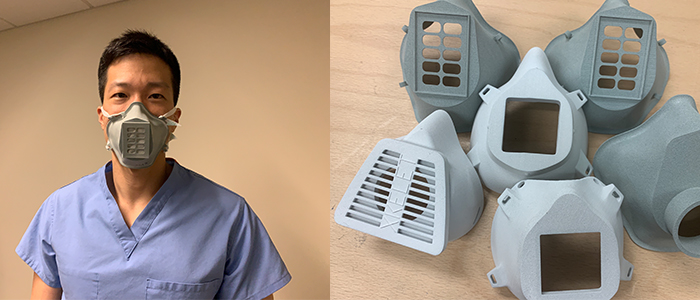
Left Image: VA physician Dr. William Chang evaluates a prototype 3D-printed mask, designed by VA staff. Right Image: Different mask designs printed and awaiting clinical evaluation. Image courtesy of VHA.
Within this larger effort, the FDA and its partners are establishing other resources to aid in the development, production and distribution of 3D-printed medical devices as well. This includes a key FAQ page on 3D printing medical devices, accessories and parts during the pandemic. Here is a summarized list of what is discussed on the page:
- The FDA has issued previous guidance on 3D-printed medical devices that should be considered during the pandemic.
- 3D-printed personal protection equipment (PPE) will not provide the same protection as FDA-cleared surgical masks and N95 respirators, but if they are used, the FDA has provided information about how to make them as effective as possible.
- Safety considerations that should be taken into account for 3D-printed masks include:
- checking the mask for seals
- ensuring that the wearer can breathe through the mask and any makeshift filters
- using caution in surgical environments
- knowing the mask may not be an adequate filter for preventing the transmission of disease
- safely disposing of the masks.
- Complex products cannot be easily printed
- Those printing parts should ensure they match originals as much as possible and ensure they fit and work properly.
- Those printing parts should work with relevant medical device manufacturers.
- The FDA is willing to discuss the possibility of 3D printing entire medical devices and should be contacted at COVIDManufacturing@fda.hhs.gov to learn more.
- The FDA’s Emergency Use Authorization (EUA) includes 3D-printed tubing for multiplexing ventilator use.
Other critical information shared by the FDA includes studies examining and optimizing the decontamination and reuse of respirators during public health emergencies. Additionally, ASTM International is offering free access to its Standards related to COVID-19. The FDA has also provided a link to Cambridge University’s research into the efficacy of household materials as filters used during a flu pandemic.
We will examine all of this information in greater detail to better understand what is and isn’t needed from 3D printing providers to address medical supply shortages, as well as the safety precautions involved, and provide further updates in subsequent articles.
The post 3D Printing for COVID-19, Part Eight: The FDA’s 3D Printing Resources appeared first on 3DPrint.com | The Voice of 3D Printing / Additive Manufacturing.
AMS 2020: Panels on 3D Printing in Implants and Orthopedics, Regulation in Additive Medical Devices
There was much to enjoy and learn at the recent Additive Manufacturing Strategies event, held in Boston and co-hosted by 3DPrint.com and SmarTech Analysis, especially with the addition of a new metals track. There was the ever popular Startup Competition, time to network with colleagues, interesting keynotes, an exhibition hall, industry forecasts by SmarTech, and many different panels and presentations.
On the first day, I sat in on a panel on the event’s medical track about the use of 3D printing in implants and orthopedics. Martin Neff, the Head of Plastic Freeforming for German machine manufacturing company Arburg, spoke first, and provided attendees with a detailed explanation of its patented ARBURG Plastic Freeforming (APF), the process principle behind it, and what the Freeformer can offer.
“Our process can use standard resin, is already on the market and cleared by the FDA for medical devices, and it’s similar to injection molding,” he explained.
Moving on, Neff said the biggest thing to keep in mind for this application of 3D printed implants and orthopedics is how to achieve repeatability, traceability, and position. Additionally, he mentioned that the selection and freedom of materials in this sector is also a “very important area.”
 Carissa Kennison, the Director of Marketing for New Jersey-based Additive Orthopaedics, explained that the company, which was founded in 2016, designs, markets, and manufactures medical implants.
Carissa Kennison, the Director of Marketing for New Jersey-based Additive Orthopaedics, explained that the company, which was founded in 2016, designs, markets, and manufactures medical implants.
“We’re inspired by the outcomes these 3D printed implants are having in our patients’ lives,” she said. “The patient testimonials are truly inspiring – often, patients go to multiple surgeons and are told to get a fusion, which limits joint motion, or an amputation. So we’re giving them an alternative solution, and challenging the solutions of standard of care. It’s pretty exciting to be a part of that.”
While he was unable to be at AMS 2020 in person, Jean-Jacques Fouchet, the VP Business Development and co-founder of 3D printing company Z3DLAB – Parc Technologique, was able to join the panel via Skype, and explained to attendees that “Z3DLAB is an expert in materials science,” and that it has developed a 3D printed implant for the dental field. The company’s mission is to deliver a new generation of advanced, titanium-based material for the AM market.
“We do two titanium materials, one based on Ti-64 that’s enhanced and one based in Ti-CP,” he explained. “Our 3D printed implant has an interior porous structure.”
Fouchet went on to say that Z3DLAB had completed a study with EnvA, LNE, and BAM, and that after just two months of implementation, “we got high-resolution scanner results that showed 84% bone inside the implant. Not bone tissue, but bone.”
The last panelist was Andrus Maandi, Sr. Product Development Engineer for Oxford Performance Materials (OPM). He explained that OPM was originally founded as a materials science company, working exclusively with PEKK (polyetherketoneketone), and began adopting 3D printing all the way back in 2008.
Discussing some of the company’s orthopedic applications, Maandi brought up OPM’s OsteoFab 3D printing process, which involves laser sintering with its high-performance OXPEKK material.
“We’ll get a CT scan, and in-house can deliver implants within 24-48 hours to healthcare facilities,” he stated.
OPM started with CMF and spinal implants, and its latest 3D printed device is a suture anchor, which will have its first case performed this month.
“One of the main benefits is the impact we can have on patient care and improving their lives,” Maandi explained. “We see the additive manufacturing industry moving, at least in the orthopedic market, and slowly going down the body…moving down to long bone defects and ankle reconstruction.”
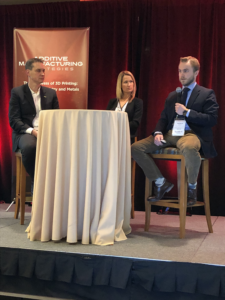 The floor was then opened for questions, and someone asked if OPM had a roundabout price for its 3D printed implants; as we all know, custom medical devices can be pricey. But Maandi responded that it is “overall cheaper than something you could machine.”
The floor was then opened for questions, and someone asked if OPM had a roundabout price for its 3D printed implants; as we all know, custom medical devices can be pricey. But Maandi responded that it is “overall cheaper than something you could machine.”
John Hornick, the Chairman for the Medical and Dental track at AMS 2020, asked a question next, telling the panelists that two of his friends had recently received knee replacements. One friend had a 3D printed implant, while the other had a conventionally manufactured one, “because his doctor didn’t know anything” about AM technology. Hornick wanted to know how the panelists got the word out about what their companies could offer.
Kennison said that it really depends on the application – surgeons are more likely to engage in word of mouth, and do their own marketing and PR, for some of the more complex cases that use 3D printing.
“It can be challenging to market some of these cases,” she said. “You can’t promote custom devices, so there are some restrictions here.”
Maandi acknowledged that it can be tough, because many of the people they deal with in the healthcare field just aren’t aware of all of the available 3D printed options.
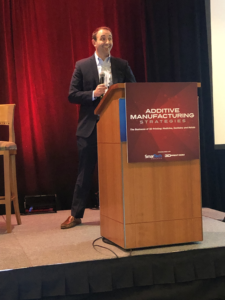 Later that same day, I sat in on a panel called “Regulation of Additive Manufacturing of Medical Devices and Its Impact on Products Liability,’” which I had not originally planned on attending; however, after sitting at the same lunch table as panelist Sean Burke, a partner with the Duane Morris law firm in Washington D.C., I was intrigued.
Later that same day, I sat in on a panel called “Regulation of Additive Manufacturing of Medical Devices and Its Impact on Products Liability,’” which I had not originally planned on attending; however, after sitting at the same lunch table as panelist Sean Burke, a partner with the Duane Morris law firm in Washington D.C., I was intrigued.
Panelist Bob Zollo, the President of Avante Technology, was unable to make it, so Burke had the floor all to himself. Acknowledging with good humor that he was the only thing standing in the way of happy hour, he moved through his topic efficiently.
According to his bio, “Mr. Burke’s practice focuses on representation of manufacturers of medical devices in products liability cases across the country, including in consolidated multi-plaintiff matters in both federal court and state courts in California, Illinois, and Tennessee.” In terms of defense experience, he has worked with many things, including surgical instruments and fusion plates, and recently became interested in the use of AM, advising and consulting his clients on best practices in the early product development stages in order to help them lower their risk of liability exposure.
But, as Burke told the room, “Basically, at the end of the day, there are always risks.”
He explained that while many people look at it as more of a barrier, FDA regulation and compliance is “really the best shield that medical device companies have.”
“You’re on a bit of an island if you don’t have the same regulations.”
Burke explained that the FDA is trying to “play catch-up” in determining how exactly to regulate this kind of technology. The agency has issued guidance on design, testing, and manufacturing controls for AM, but this doesn’t mean that it’s offering a solution.
From a products liability standpoint, if a company has standards to fall back on when telling a jury about the testing that’s been completed on a 3D printed medical device, the chances are more likely that the jury will be able to understand.
“But when there aren’t standards or testing, but the FDA wants to look at it, that’s a recipe for exposure,” Burke said.
As an example, Stryker’s 3D printed tritanium spinal cage was recalled last year for updates; after conducting a Google search, Burke found four different attorneys who were looking to take these cases to court…bad news for the AM industry.
Burke moved on to current trends about litigation involving 3D printed medical devices. While there haven’t been too many class action suits because the cause for each patient’s failure is usually different, the number of cases is rising.
He listed some of the factors that drive litigation, including the media, company field actions, FDA safety communications and labeling changes, pending litigation, and scientific and medical literature. Burke also provided an explanation on the different types of product liability claims – strict liability, negligence, and fraud/misrepresentation.
In terms of manufacturing defect claims, evidence must be presented that shows there has been a “deviation from the original design.” This can be difficult to validate, but there are many variables involved with AM, such as powder use. To protect against Failure to Warn claims, medical device companies that use 3D printing need to broadcast if there are any developments, and provide up to date information as well.
Burke gave attendees some pretty solid advice at the end:
“I know you all consider this, but think about why you’re 3D printing, and make a concise statement about why you’re doing it, and not just because you’re trying to “keep up with the Joneses” in terms of cool new technology.”
Then it was time for some questions. One attendee said that patient-specific products are not always treated as customized, and wanted to know why this makes a difference in terms of regulation. Burke explained that if a 3D printed patient-specific device is deemed a custom product, then it does not have to go through the same regulatory channels.
Joris Peels, 3DPrint.com’s Editor-in-Chief, was chairing this panel, and asked about the use of 3D printing in courtroom settings, and if regulatory bodies consider it. Burke said that his firm’s experts are definitely on board with this, especially in terms of patient anatomy models. He mentioned a big case centered around hip dysplasia, and how a 3D printed exhibit – I’m guessing it was an acetabular cup – was used to show how things were not fitting correctly in the patient’s body.
Another attendee asked Burke for best practices that startups not yet looking to liabilities could use.
“I think it depends on what they want to do,” he answered. “I work with startups and large companies, but there are some things to do up front to advise them.”
He suggested setting up a meeting with the FDA to hear their thoughts and concerns, and document the meeting.
“It’s an exhibit – the FDA knew we were doing this and that test, and still cleared it,” Burke explained.
Stay tuned to 3DPrint.com as we continue to bring you the news from our third annual AMS Summit.
Discuss this and other 3D printing topics at 3DPrintBoard.com or share your thoughts below.
[Photos: Sarah Saunders]
The post AMS 2020: Panels on 3D Printing in Implants and Orthopedics, Regulation in Additive Medical Devices appeared first on 3DPrint.com | The Voice of 3D Printing / Additive Manufacturing.
AMS 2020: Keynote Presentations on 3D Printing in Metal and Medical Industries
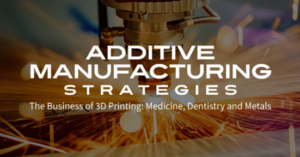 For the second year running, and its third year total, 3DPrint.com and SmarTech Analysis have brought the Additive Manufacturing Strategies summit to Boston. With a theme of “The Business of 3D Printing,” the event continues its established coverage of 3D printing in the medical and dental industries, but adds a new metals track this year.
For the second year running, and its third year total, 3DPrint.com and SmarTech Analysis have brought the Additive Manufacturing Strategies summit to Boston. With a theme of “The Business of 3D Printing,” the event continues its established coverage of 3D printing in the medical and dental industries, but adds a new metals track this year.
Lawrence Gasman, the President of SmarTech, welcomed everyone to the event, and then we jumped right into the thick of things, as Dr. Banu Gemici-Ozkan, Senior Market Intelligence Leader for GE Additive, presented her keynote, entitled “Metal Additive Strategies Enabling Next Generation of Adopters.”
Dr. Gemici-Ozkan explained that she’s been working with additive manufacturing for about four years, and her role is to oversee global operations, as well as support business in the metal AM space with the right applications.
“I’m in marketing, so I have to start with numbers,” she said, pulling up a slide of the “world of opportunities” for metal AM.
She explained that conventional manufacturing happens in many stages – you have to extract the metal, process it in chemical plants, assemble it into the final products, and several others that I’m definitely leaving out. Additive manufacturing can accomplish all of this in less steps, which is why it’s so attractive.
An example of an engine turbine came up, and at the bottom was a statement about how metal AM is competing with $570 billion worth of core conventional metal manufacturing processes. But, system redesign is what makes it competitive to this traditional methods – AM offers a simpler supply chain and leaner operations.
“It’s really exciting to see the potential of additive manufacturing,” Dr. Gemici-Ozkan said. “But where are we in this vision today?”
A timeline showed that the number of metal AM system installations in the first stage of the “diffusion of innovation,” in the 1990s, was less than 50…only the true innovators will put in the work of debugging these first systems and working out the kinks. The early adoption visionaries come in later, excited to invest in the technology.
“The customers are who drive the change,” she said. “So far, we’ve only seen innovators and visionaries.”
She explained that the next generation of the market will consist of the bigger players, or pragmatists, jumping on board. These adopters are cost-conscious, and will be looking for full solutions.
Then, she walked us through what she called the four “critical industries” in metal additive manufacturing. I’m sure you can guess them: medical, dental, aerospace, and automotive. When asked if they were there with the medical field, nearly half the hands in the room were raised, making Dr. Gemici-Ozkan’s point that this sector is a “great space to be in from a metal AM perspective.” The adoption drivers in this industry are cost and performance, with major applications in porous, biocompatible structures with fine features. Here, accuracy, repeatability, and traceability become really important.
Dental is the most mature industry for metal AM, a point that I heard multiple times throughout the day in different presentations. She explained that adoption drivers are lead time and customization; in this and the medical industry, the turnover time with metal 3D printed parts is roughly 24 hours, which you just can’t beat. Additionally, technology providers are focused on meeting customer needs.
In the aerospace industry, industrial production is the main focus. The materials are more versatile, and applications are in large parts and complex geometries with fine features.
“I could talk for hours about this industry,” she said.
“The potential is huge…this space offers a great potential from the industrial production perspective.”
She brought up the GE9X jet engine, which has 304 3D printed components and offers GE Aviation fuel savings of 10% when compared to its predecessor, the GE90, which only featured one 3D printed part.
The automotive industry is already automated, so its needs are focused on cost-conscious systems. Dr. Gemici-Ozkan said that AM technology providers “need to consider integrating their systems to the factory solutions.” The technology will have greater potential in this sector as material costs continue to come down, and she noted that binder jetting will be important in this space.
“Additive manufacturing is not a one-size-fits-all solution – it offers different solutions for different industries and applications,” Dr. Gemici-Ozkan said in summary. “It sounds like it’s all versatile, but these are the building blocks of mainstream technology.”
Then it was time for the next keynote presentation, “Medical 3D Printing: Building the Infrastructure for Innovation,” by Lauralyn McDaniel, Industry Manager, Analysis, for the American Society of Mechanical Engineers (ASME). Part of ASME’s mission is to improve people’s lives through engineering, which is definitely what 3D printing is working towards in the medical field.
McDaniel also started with numbers, with a slide stating that over one million patients had been directly impacted by AM, and that number increases to over two million when you take into account indirect impacts.
“Understanding the history of additive manufacturing in the medical industry can give us clues as to where we go from here,” McDaniel said, before launching into a brief timeline that began with the first 3D printed model from a medical image in 1988.
She explained that some of the factors leading to growth of the technology in the medical field include improved software, more material choices, precision medicine, faster and more precise processes, and the fact that more people share their resources and experience.
“You need published studies to generate the evidence that doctors need,” McDaniel explained.
Challenges include process bottlenecks, verification and validation processes, standards and regulations, and the workforce development.
Then, she cleared up something that many don’t always understand – most materials that people say are FDA-cleared are not, they have just been used in FDA-cleared devices. For example, titanium is often used in orthopedic implants, but the material itself is not cleared by the FDA, it’s just been cleared for use in the implant.
Continuing on to the regulatory process, McDaniel explained that there’s a “big difference” between a new product, and a new way to make the same product.
“The dental industry has a whole infrastructure set up to match patients with devices and implants, 3D printing just gives them a new, more efficient way to do it,” she said. “But anatomical models is a whole new product category.”
McDaniel said that ASME is supporting a series of discussions about the FDA’s concept framework for 3D printing at the point-of-care, and has worked with the agency to create validation and verification standards, including those for 3D printed medical devices. Just over half of the medical devices that have been cleared by the FDA are metal, so never fear, polymers are still significant in this space.
On the clinical side of things, standards aren’t quite as common, but she mentioned that the RSNA Special Interest Group is working to develop guidelines to help others with their own processes.
Some of the development highlights that McDaniel touched on include 3D printing-enabled tissue fabrication, clear dental aligners, which “exploded a bit because some of the patents expired,” tissue fabrication in outer space, and the fact that nearly 150 3D printed medical devices have been cleared by the FDA overall; at least three of these were patient-specific.
Moving forward with medical 3D printing, McDaniel said we need more collaboration and sharing of our experiences and resources, along with continuing materials development, improved software and AI, increased standards development, and more regulatory clarification, especially in hospitals.
Stay tuned to 3DPrint.com as we continue to bring you the news from our third annual AMS Summit.
Discuss this and other 3D printing topics at 3DPrintBoard.com or share your thoughts below.
[Photos: Sarah Saunders]
The post AMS 2020: Keynote Presentations on 3D Printing in Metal and Medical Industries appeared first on 3DPrint.com | The Voice of 3D Printing / Additive Manufacturing.
Dassault Systèmes Announces Extended FDA Partnership, Dassault Aviation Collaboration, Earnings
 Dassault Systèmes makes numerous announcements this week, as they continue to lead in partnerships and projects around the world, usually connected to their proprietary 3DEXPERIENCE platform.
Dassault Systèmes makes numerous announcements this week, as they continue to lead in partnerships and projects around the world, usually connected to their proprietary 3DEXPERIENCE platform.
Currently the FDA has extended their collaboration regarding development of their cardiovascular device review tool for five years. This is meant to offer a completely new process for the medical industry, accelerating diagnosis and treatment of heart disease.
The second part of the collaboration is connected with the 21st Century Cures Act, with the creation of a fascinating process—again geared toward improving medical treatment—with the use of virtual patients and simulation for clinical trials.
“Our collaboration with the FDA underscores the relevance and sustainability of digital twin experiences created with the 3DEXPERIENCE platform to test devices and drugs in scientific and medical innovation,” said Claire Biot, Vice President, Life Sciences Industry, Dassault Systèmes. “Enriching technology already well established in regulated industries such as aerospace and automotive, virtual patients support the complex development of therapies for the heart, brain and more by eliminating traditional cost and time bottlenecks. With this new review process, Dassault Systèmes and the FDA can be partners in the transformative impact of the virtual world on industrial innovation, new treatments and the patient experience.”
The project is multi-faceted, also including a Living Heart simulated 3D heart model meant to function as a ‘source of digital evidence for new cardiovascular device approvals,’ including an in silico (by way of computer simulation) trial meant to decrease the need for testing on animals—or for patients to be involved in trials. Dassault Systèmes expects for this project and innovative digital process to be more efficient and less expensive.
“Modeling and simulation can help to inform clinical trial designs, support evidence of effectiveness, identify the most relevant patients to study, and assess product safety. In some cases, in silico clinical trials have already been shown to produce similar results as human clinical trials,” said Tina Morrison, Ph.D., Deputy Director in the Division of Applied Mechanics, Office of Science and Engineering Labs, Center for Devices and Radiological Health, FDA. “The FDA continues to encourage research to facilitate the introduction of safe and effective therapeutic solutions.”
Dassault Aviation also continues to push their Next Generation Enterprise platform forward, with six new ‘industry solution experiences’ meant to offer better performance for businesses with streamlined performance and better savings on the bottom line. They will be focused on the following features, based on the 3DEXPERIENCE platform:
- Winning Concept
- Program Excellence
- Co-design to Target
- Ready for Rate
- Build to Operate
- Keep Them Operating
With 3DEXPERIENCE, businesses can integrate 3D design, analysis, simulation, and more in one, comprehensive digital environment. Teams can collaborate more efficiently—along with communicating with their entire global supply chain, partners, contractors, and more.
“As we move forward with our digital transformation, we are using the 3DEXPERIENCE platform to develop a digital, multi-program approach with easy access to data, especially for program management, procurement and quality processes,” said Jean Sass, Chief Digital Officer, Dassault Aviation. “All of our industrial partners will work in collaboration with their customers on one digital platform. Ultimately, this will enable us to provide our customers with new, innovative flying experiences.”
Dassault Aviation’s Falcon range of aircraft has been in demand for over 50 years, with more than 2,100 of them in service in 90 countries. In the future, these aircraft will continue to be refined for the following:
- Low fuel consumption levels
- Low CO2 emissions
- Comfort and distance features
“The 3DEXPERIENCE platform represents a holistic approach to innovation,” said David Ziegler, Vice President Aerospace & Defense Industry, Dassault Systèmes. “It equips Dassault Aviation with integrated technologies and capabilities to connect all the dots from concept to operations, bring real-world data into the virtual world for analysis and action, build powerful, dynamic value networks of suppliers, and coordinate knowledge, know-how and processes to build their future aircraft.”
Dassault Systèmes has also released their first-half revenue statement, reporting growth in in the double digits—along with reaffirming their financial goals for 2019. These figures offer results for both the second quarter and the first half, ended June 30, 2019:
- The second quarter shows non-IFRS revenue increasing by 13 percent, and software revenues increasing by 12 percent. According to Dassault Systèmes, these figures are on the ‘high end’ of their financial objectives range.
- From an ‘organic basis,’ non-IFRS revenue was up 10 percent and non-IFRS software revenue was up 9 percent in Q2.
- 3DEXPERIENCE non-IFRS software revenue was up 40 percent in H1.
- Dassault Systèmes and Medidata signed and definitive acquisition agreement on June 12, 2019.
- Updated 2019 financial objectives target non-IFRS EPS of €3.45-3.50, well aligned with a five-year plan to double non-IFRS earnings per share in 2019.
“We believe the 3DEXPERIENCE platform is a critical enabler for innovation and transformation across all major industries where the drive to provide new types of customer experiences and new business models is emerging and accelerating. We see these possibilities across the three spheres addressed by our purpose: Product, Nature and Life and the proof points with our strategic wins across a number of diverse industries over the last two years,” said Bernard Charlès, Dassault Systèmes’ Vice Chairman and Chief Executive Officer.
“Our plan to acquire Medidata, announced in June, fits perfectly into our strategy in that regard. As the Life Sciences industry shifts to science-based experience, we believe scientific innovation 2 and industrial performance call for a unified new approach and this is what we have been working towards with our investments in Life Sciences over the past years. The acquisition of Medidata, with its clinical and commercial solutions, reinforces our position as a science-based company by providing the Life Sciences industry with an integrated business experience platform for an end to-end approach to research and discovery, development, clinical testing, manufacturing and commercialization of new therapies and health technologies.
“Thanks to our platform strategy, more companies view us as a strategic partner to help them transform. We were very honored and pleased that Groupe PSA has named Dassault Systèmes a key supplier, and its preferred digital partner for its digital transformation. With Dassault Systèmes as Groupe PSA’s preferred digital partner, the two companies are engaging in a long term strategy with the intent to deploy the 3DEXPERIENCE platform as a key innovation enabler across the group’s activities.”
Dassault Systèmes continues to be a dynamic force also with recent collaborations, acquisitions, and a long and impressive client base continually signing on to adopt the 3DEXPERIENCE Platform. What do you think of this news? Let us know your thoughts! Join the discussion of this and other 3D printing topics at 3DPrintBoard.com.
[Source / Images: Dassault Systèmes press release]
The post Dassault Systèmes Announces Extended FDA Partnership, Dassault Aviation Collaboration, Earnings appeared first on 3DPrint.com | The Voice of 3D Printing / Additive Manufacturing.

